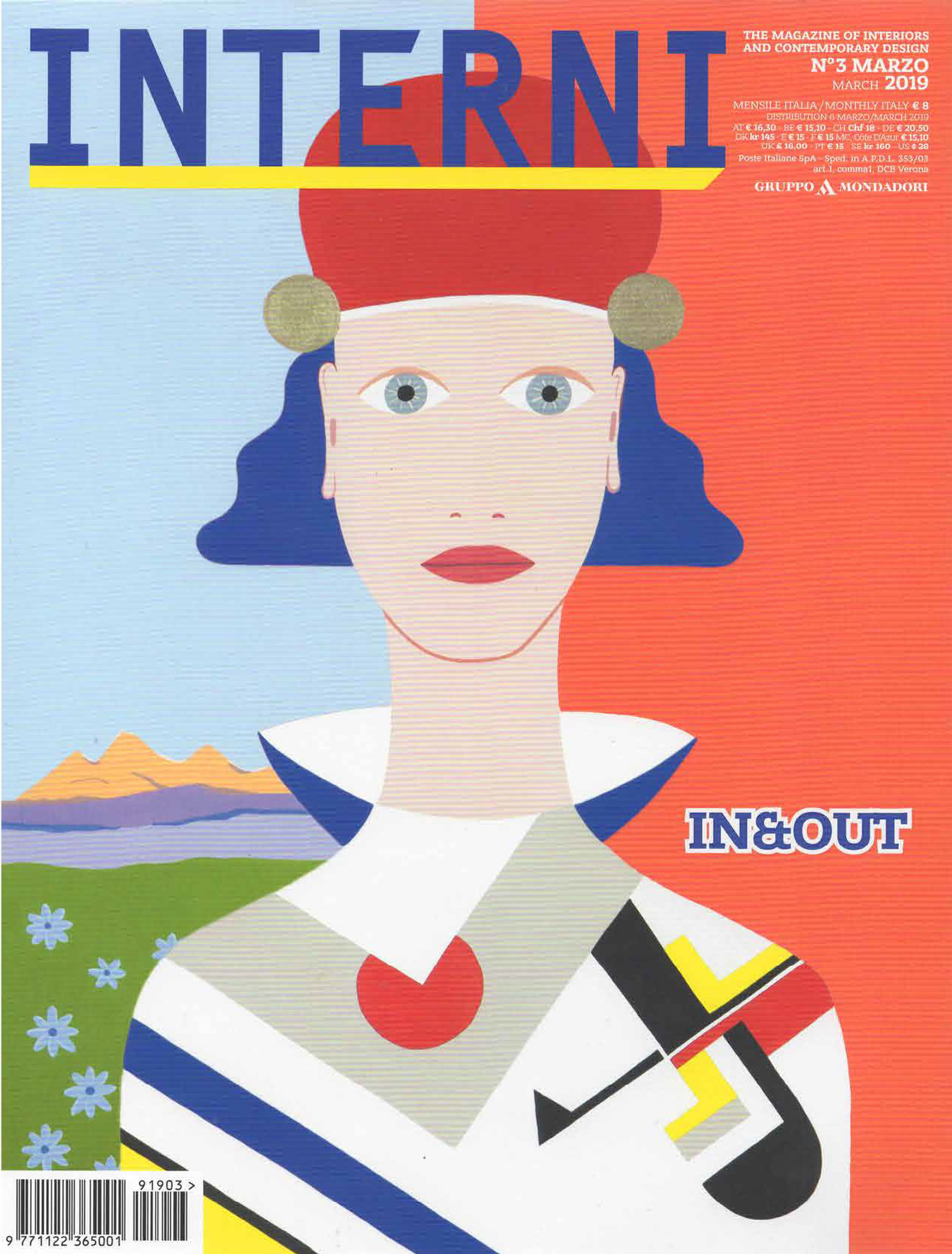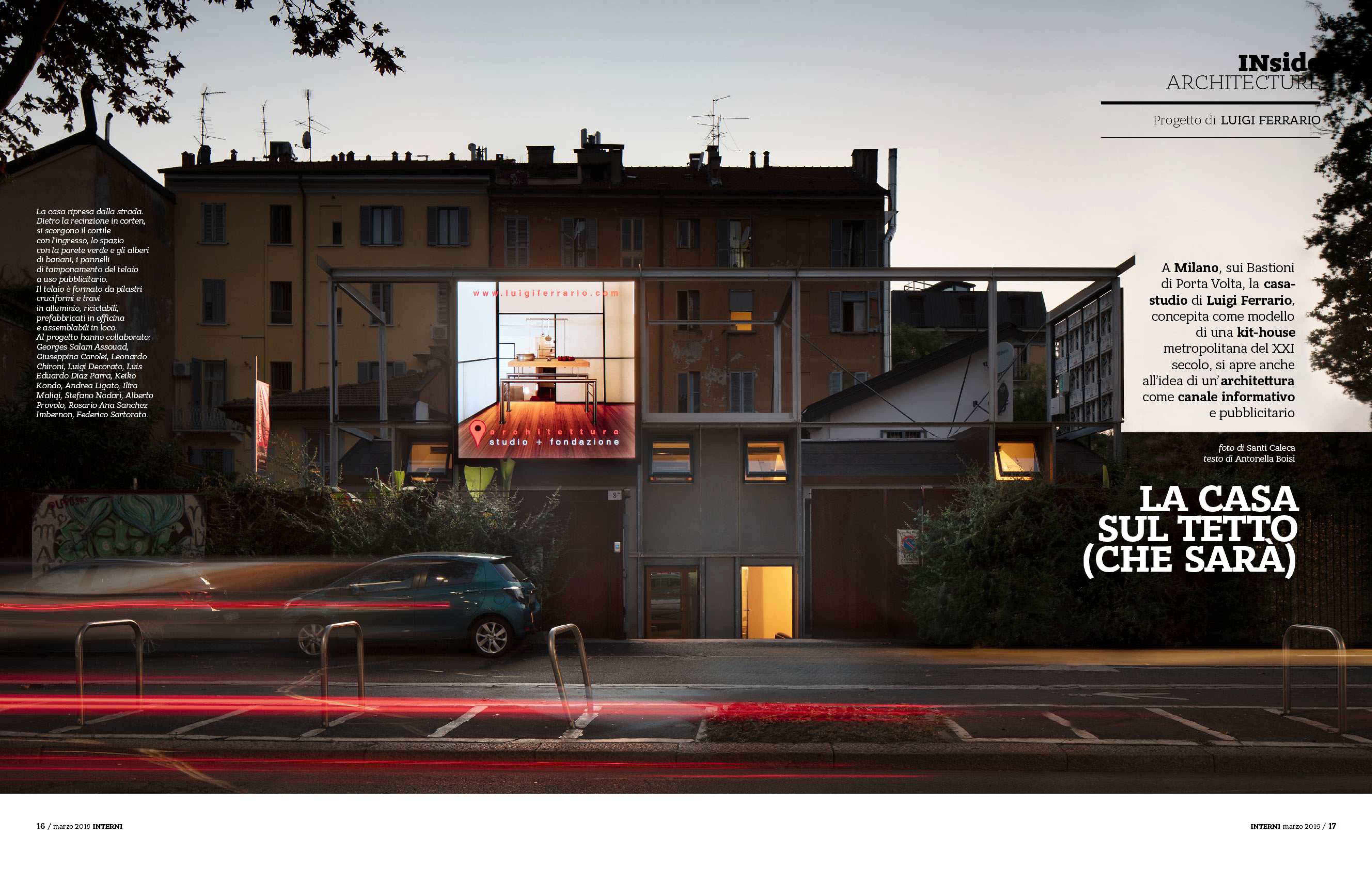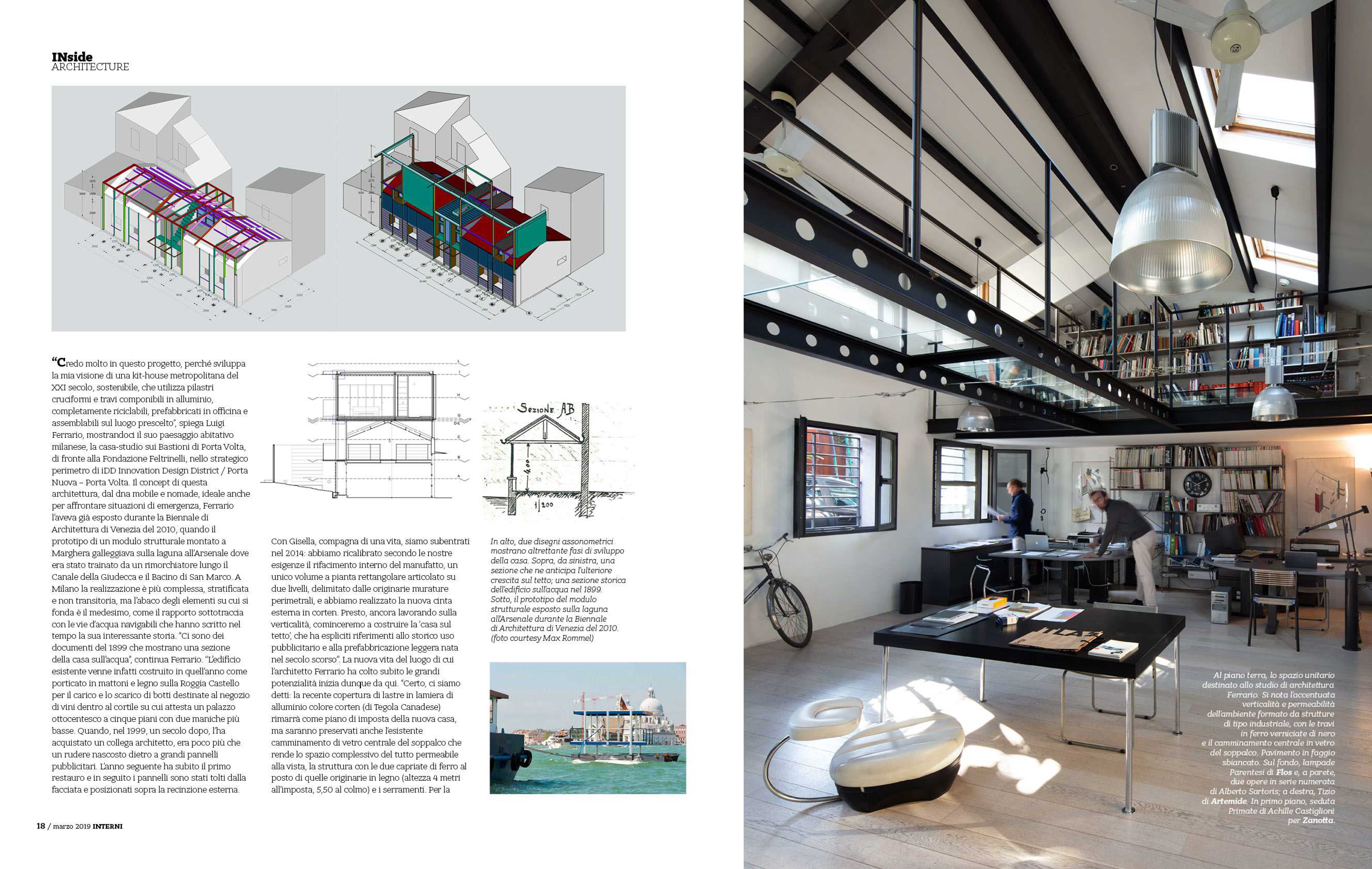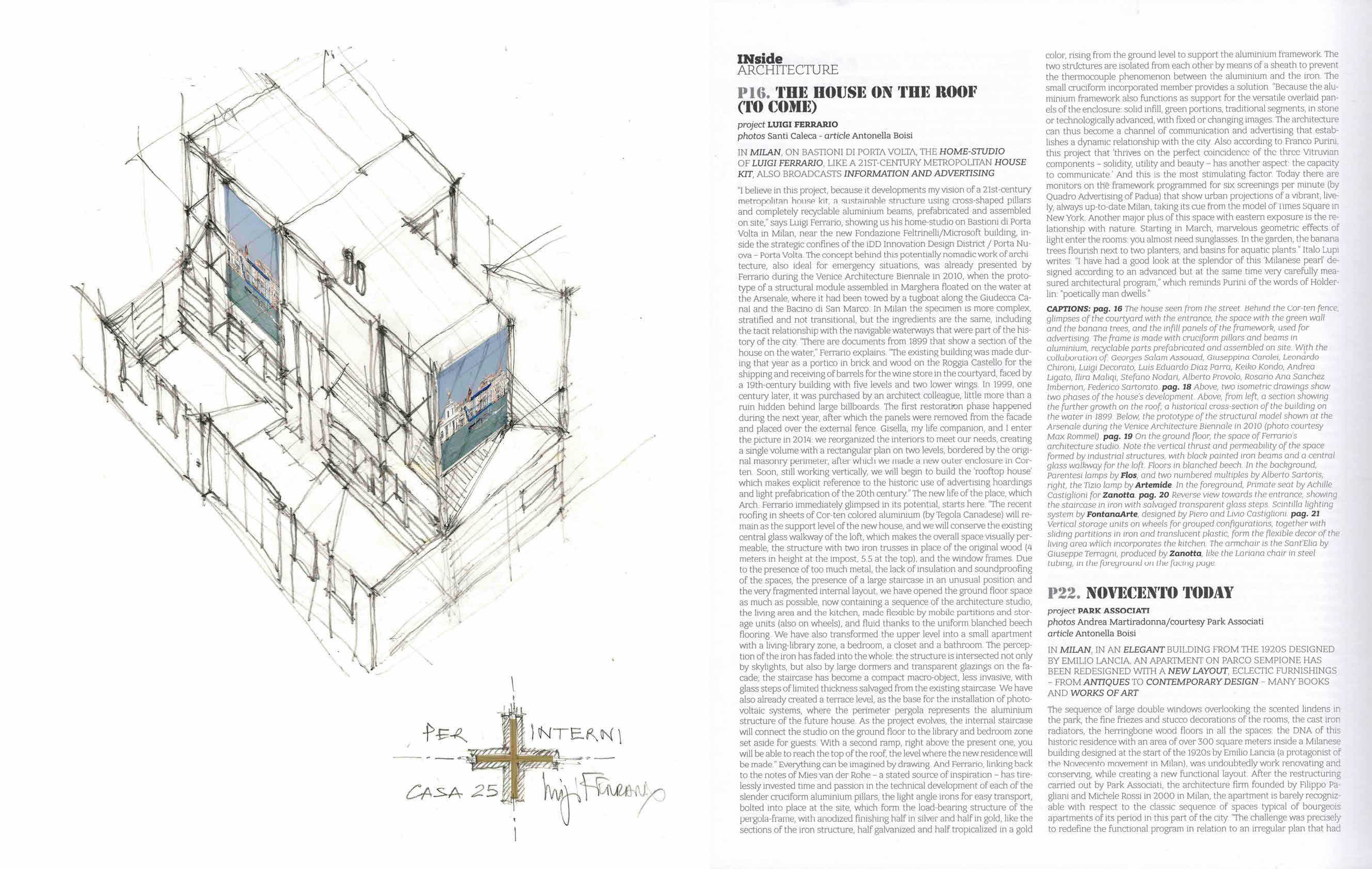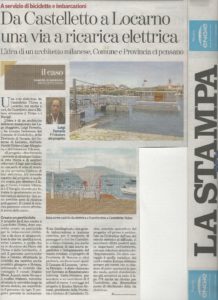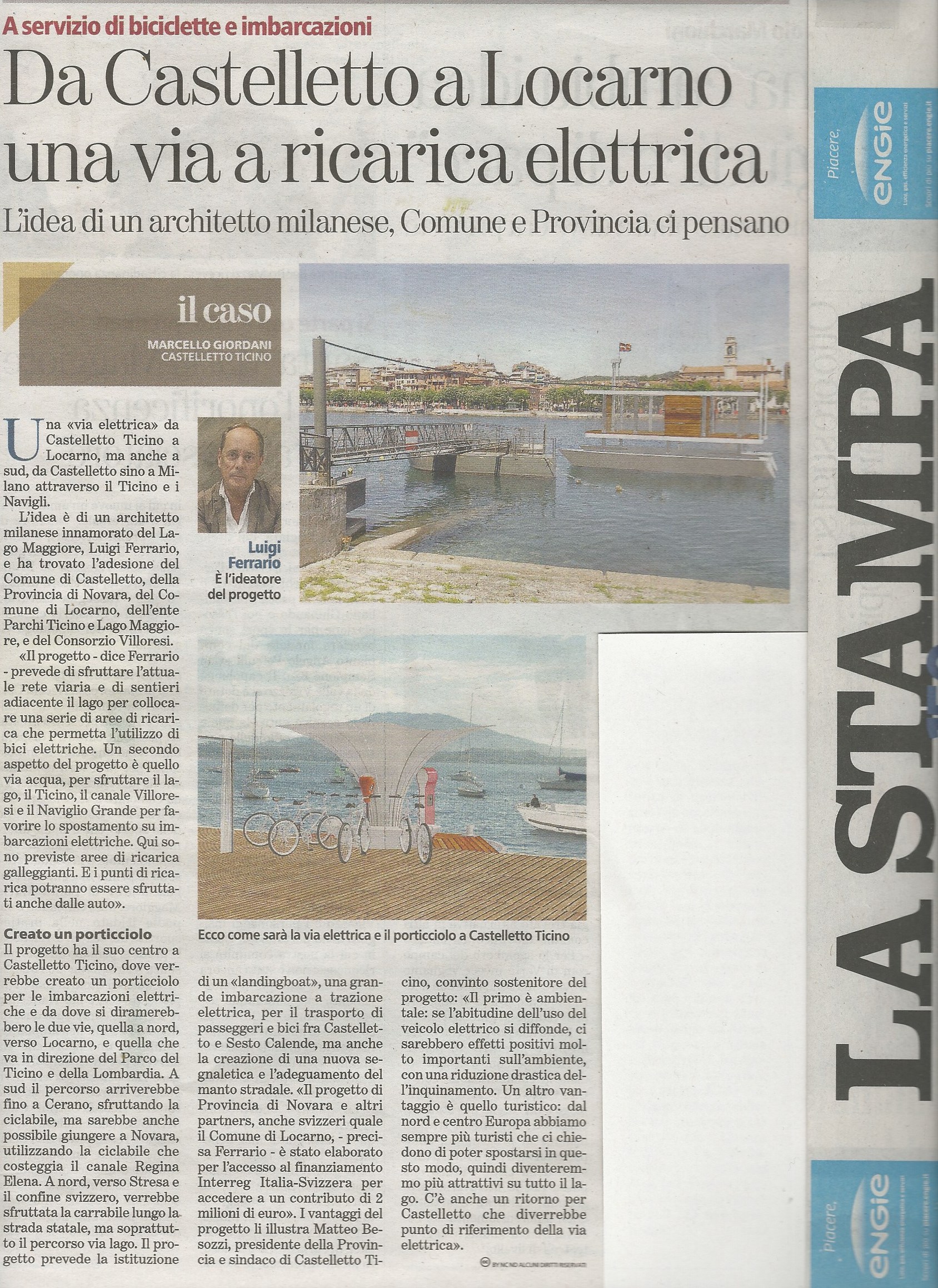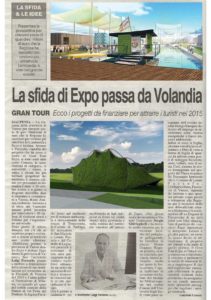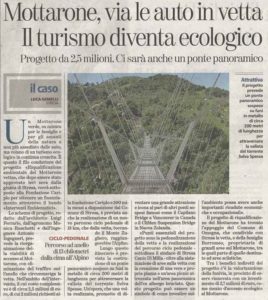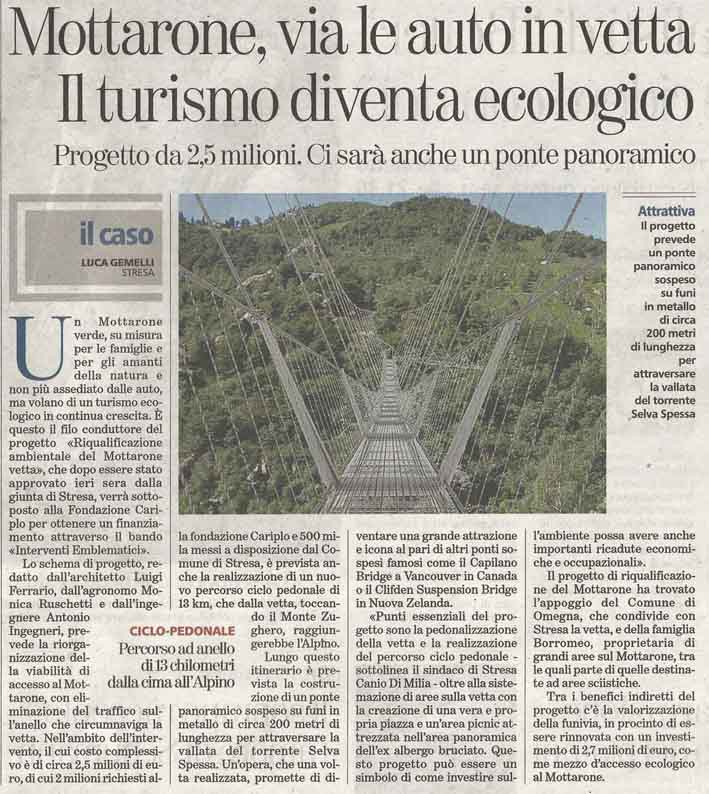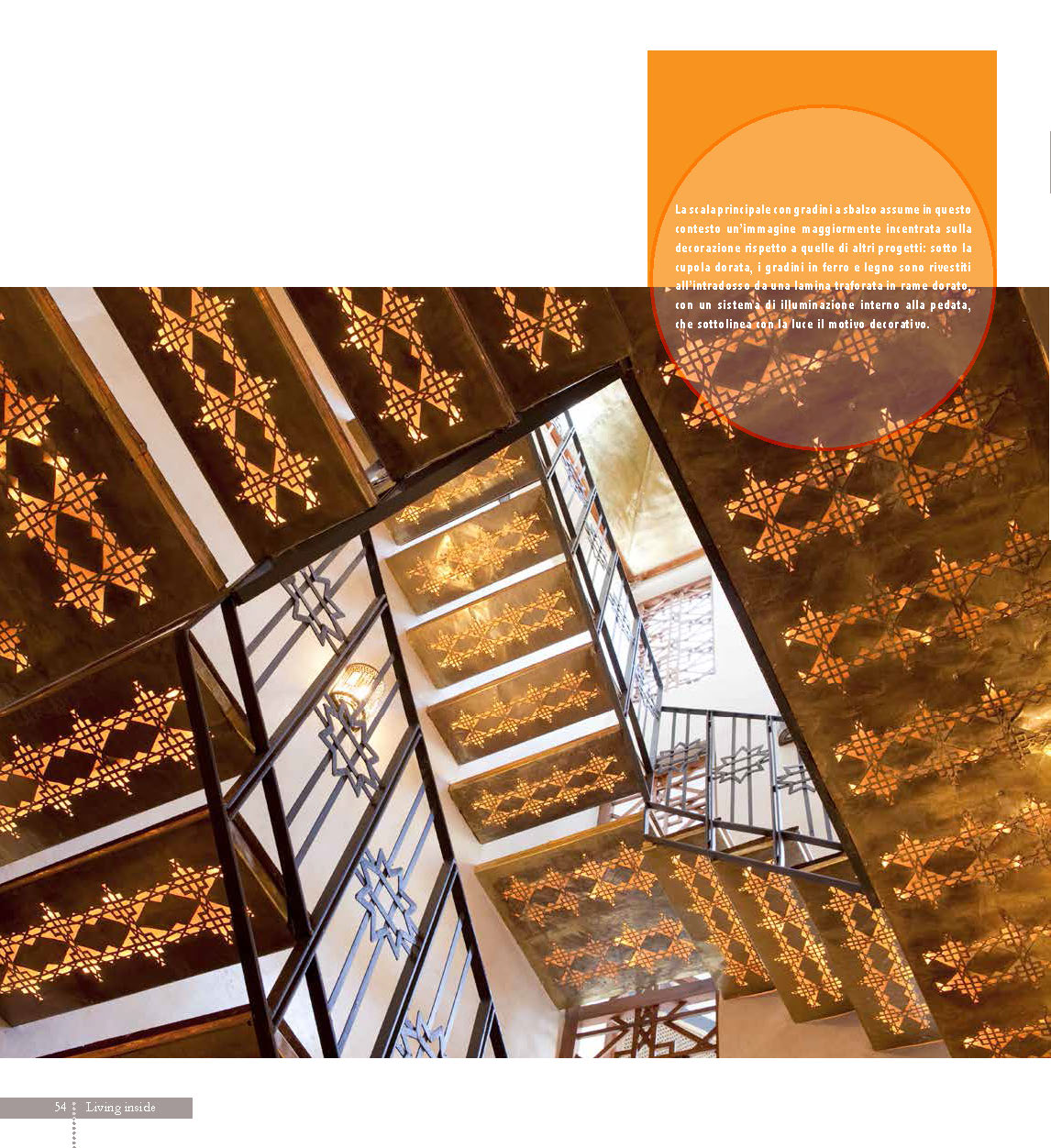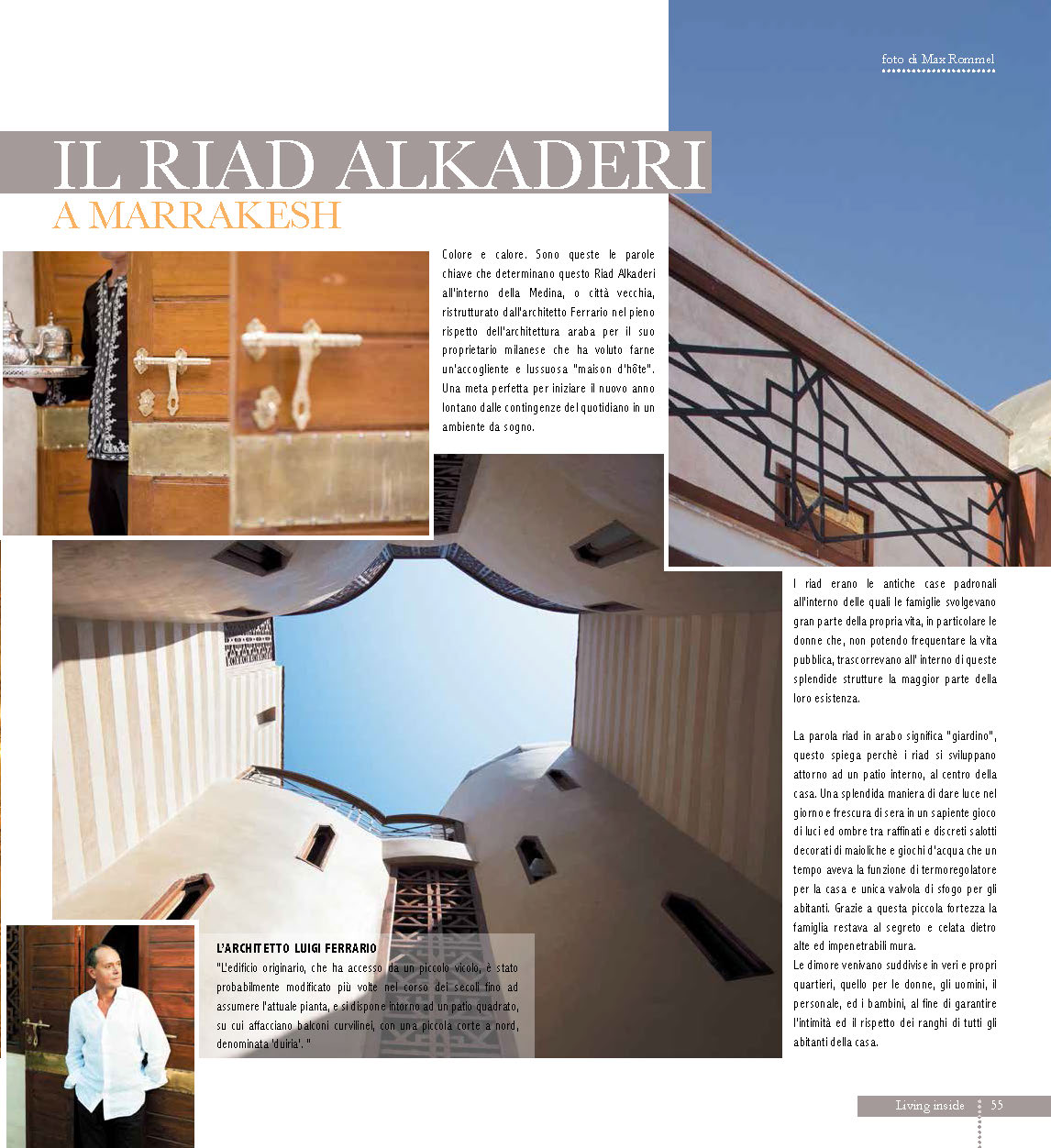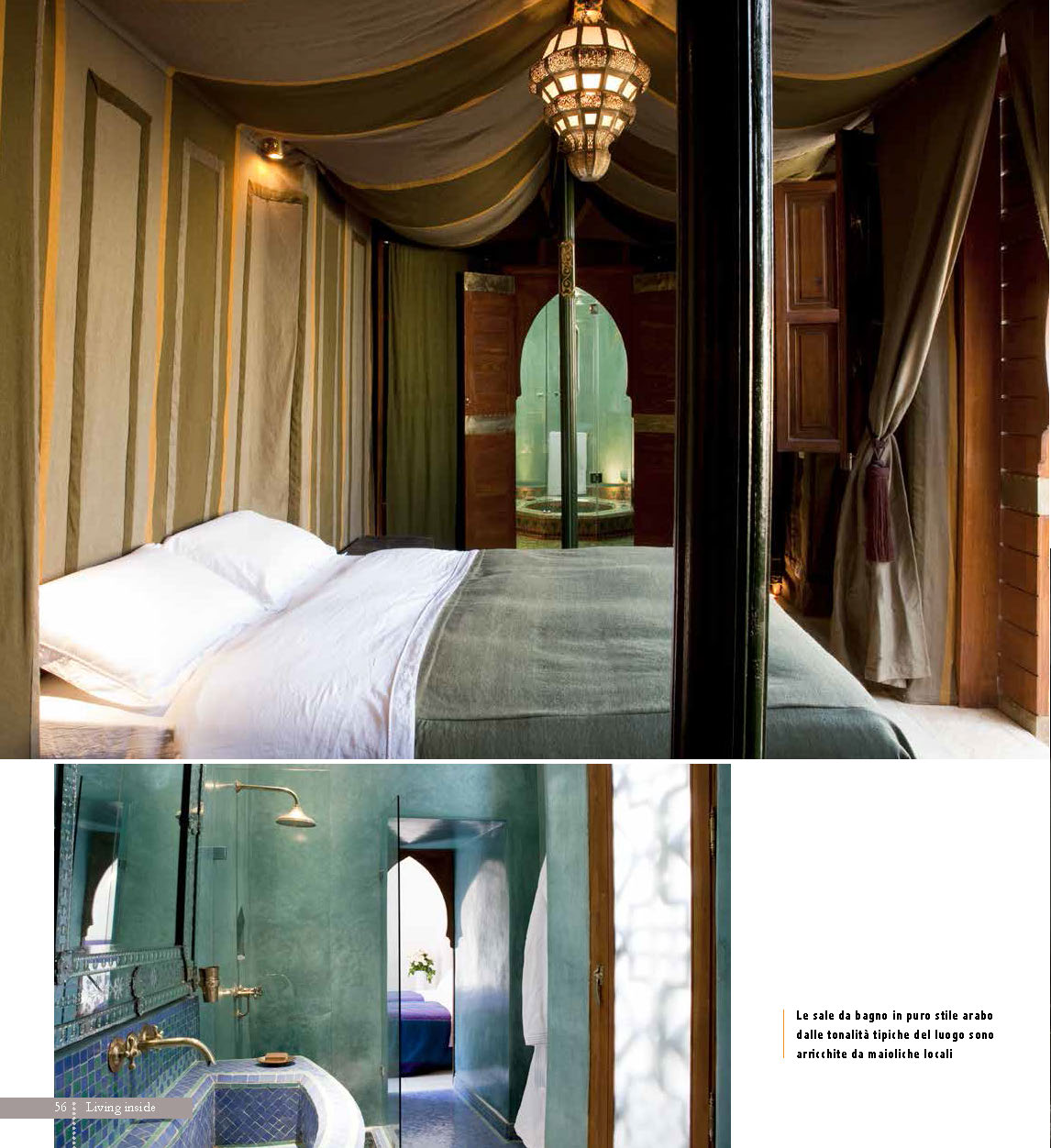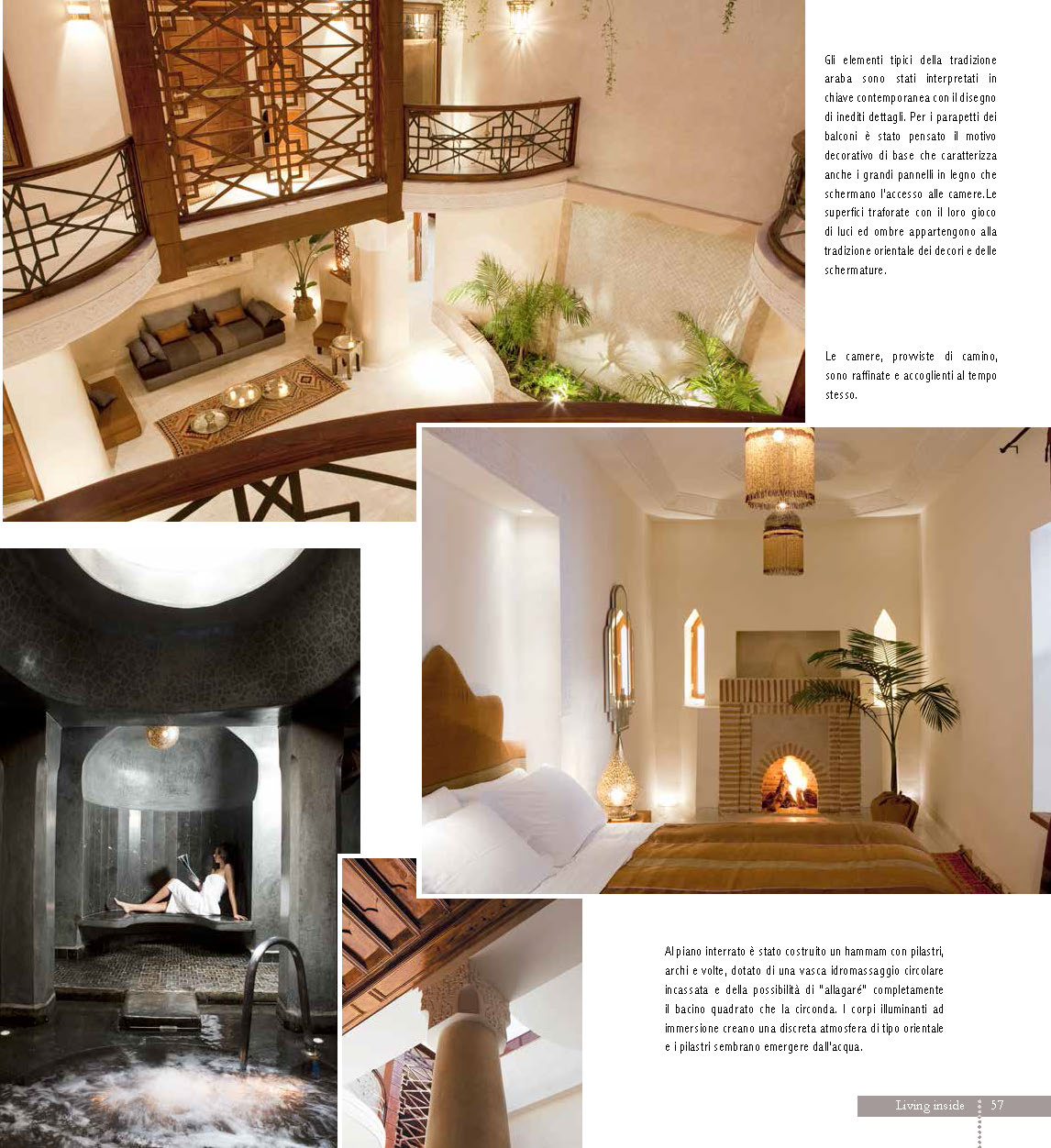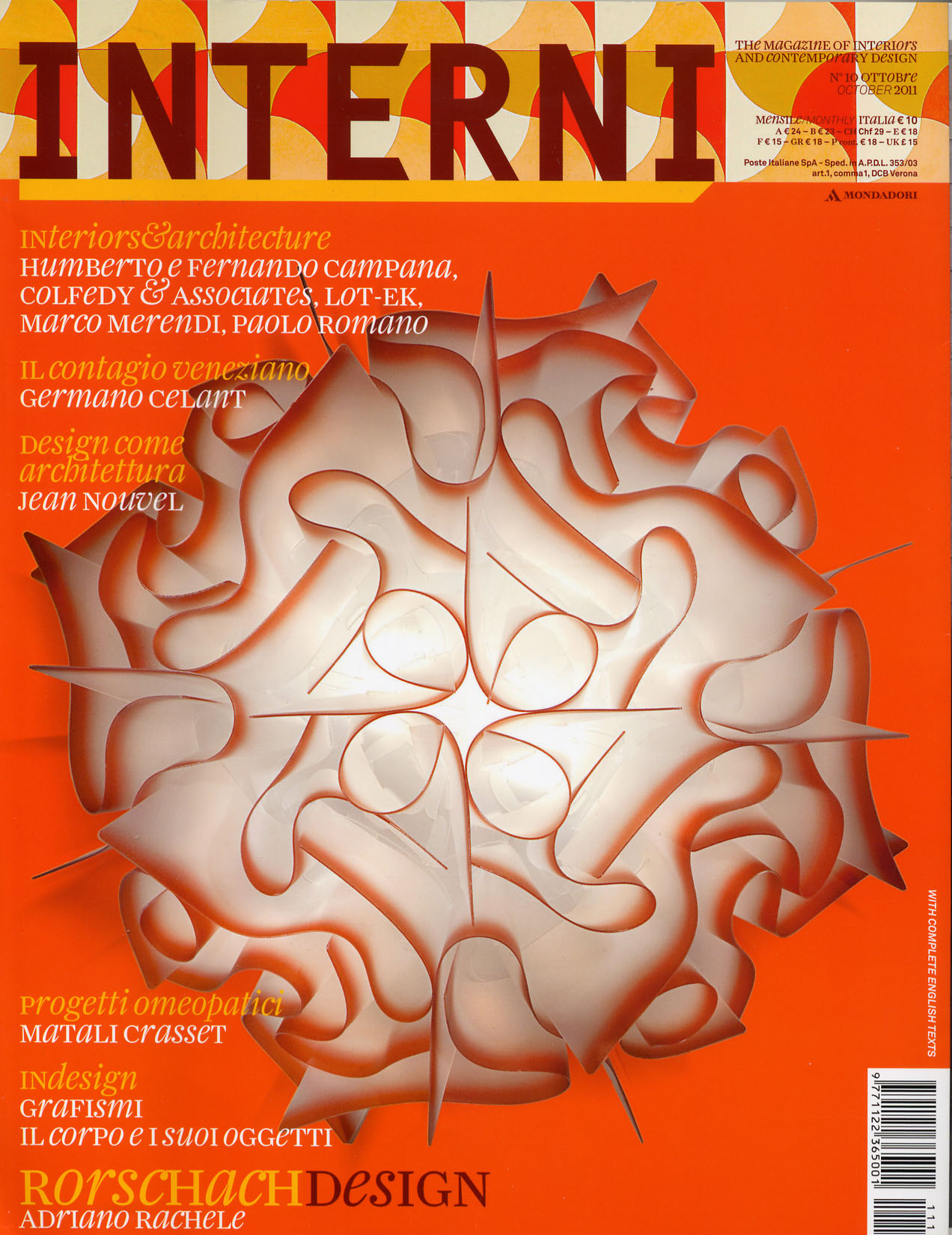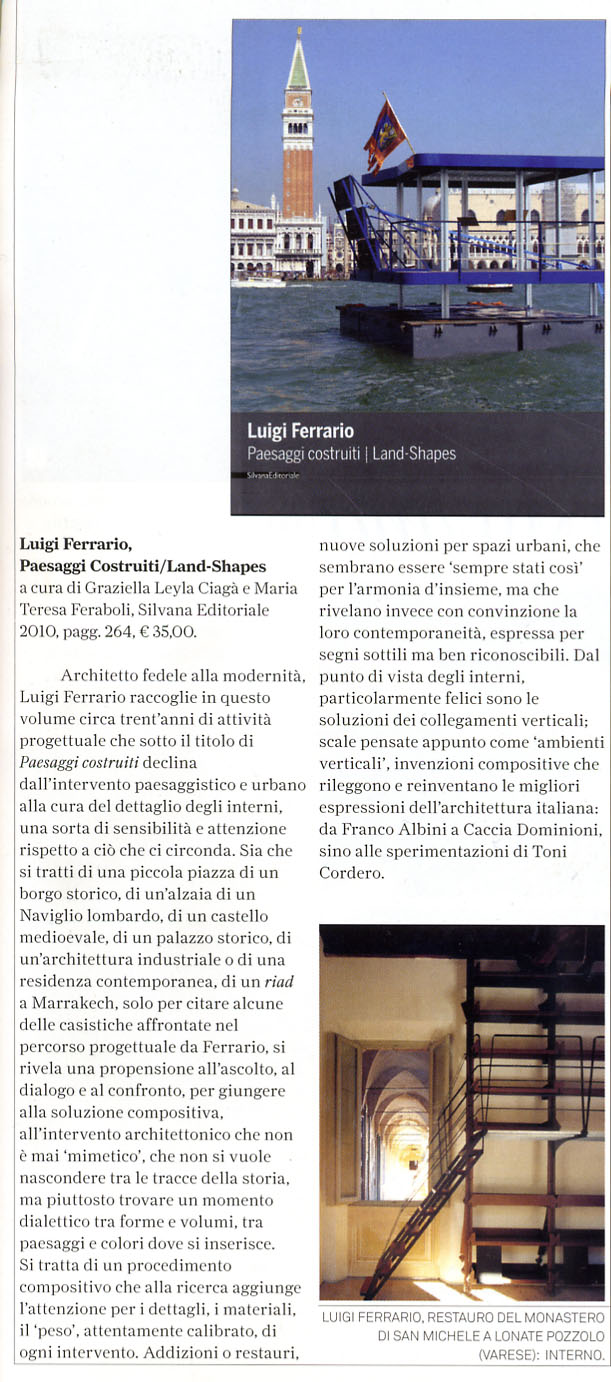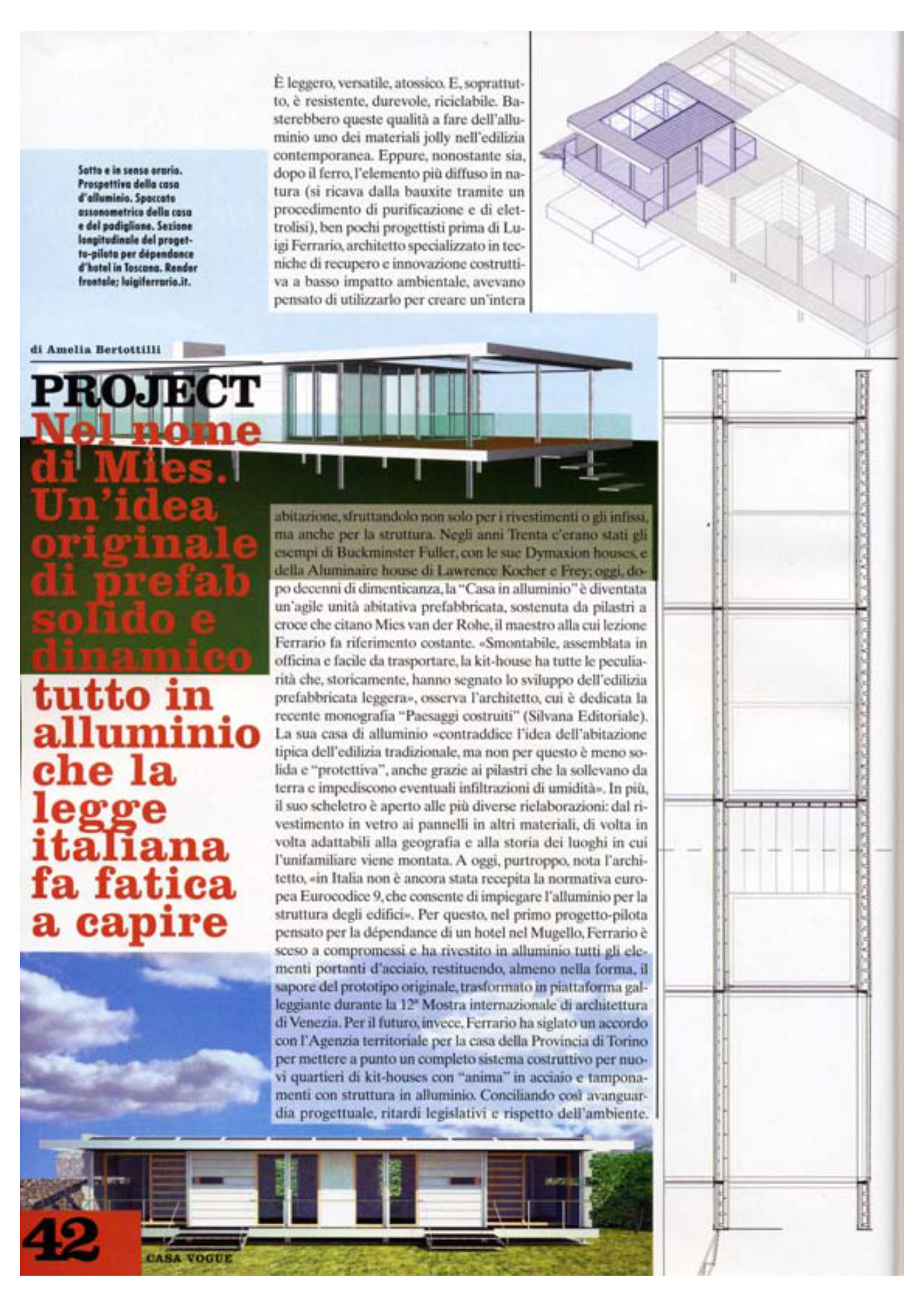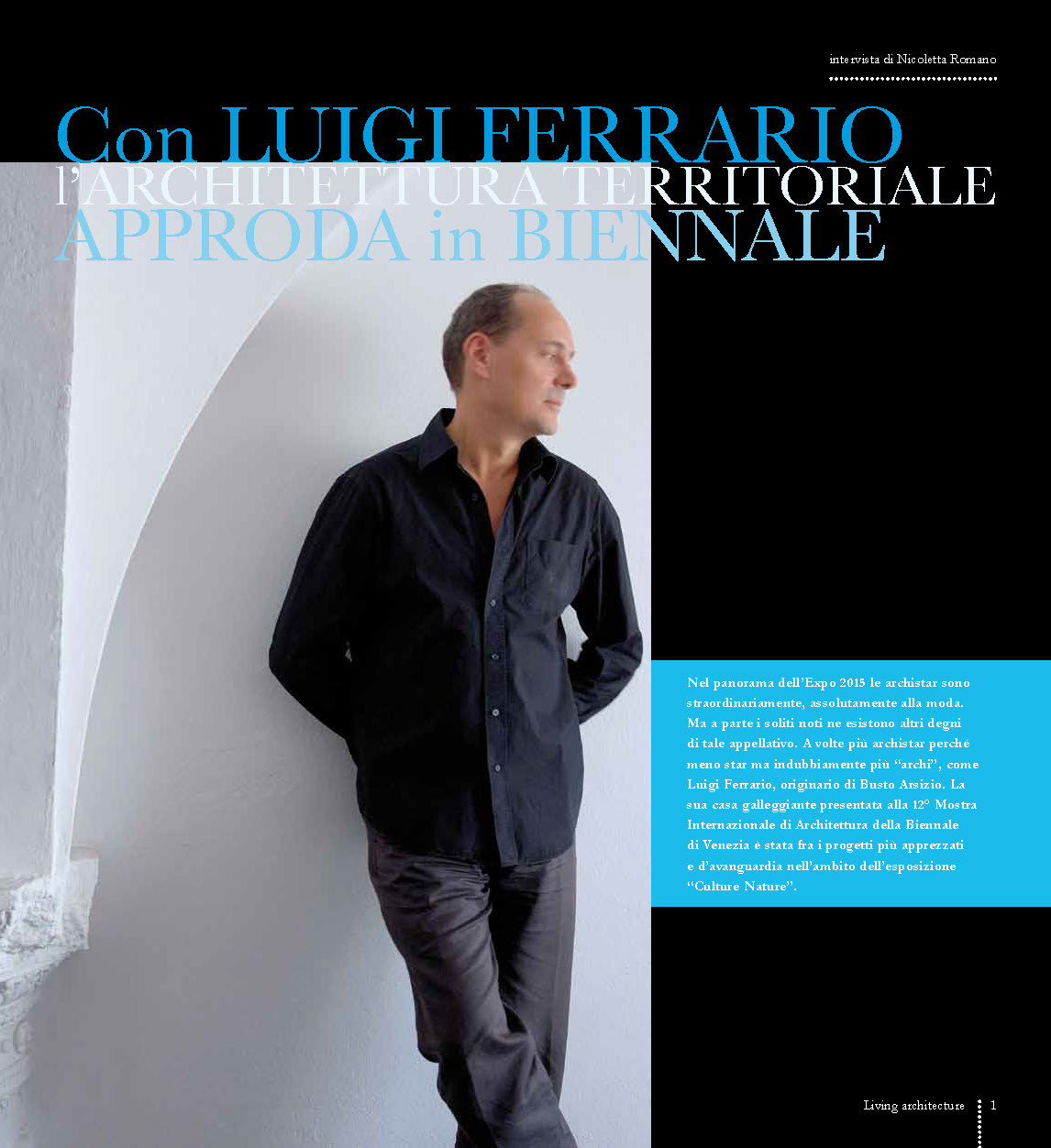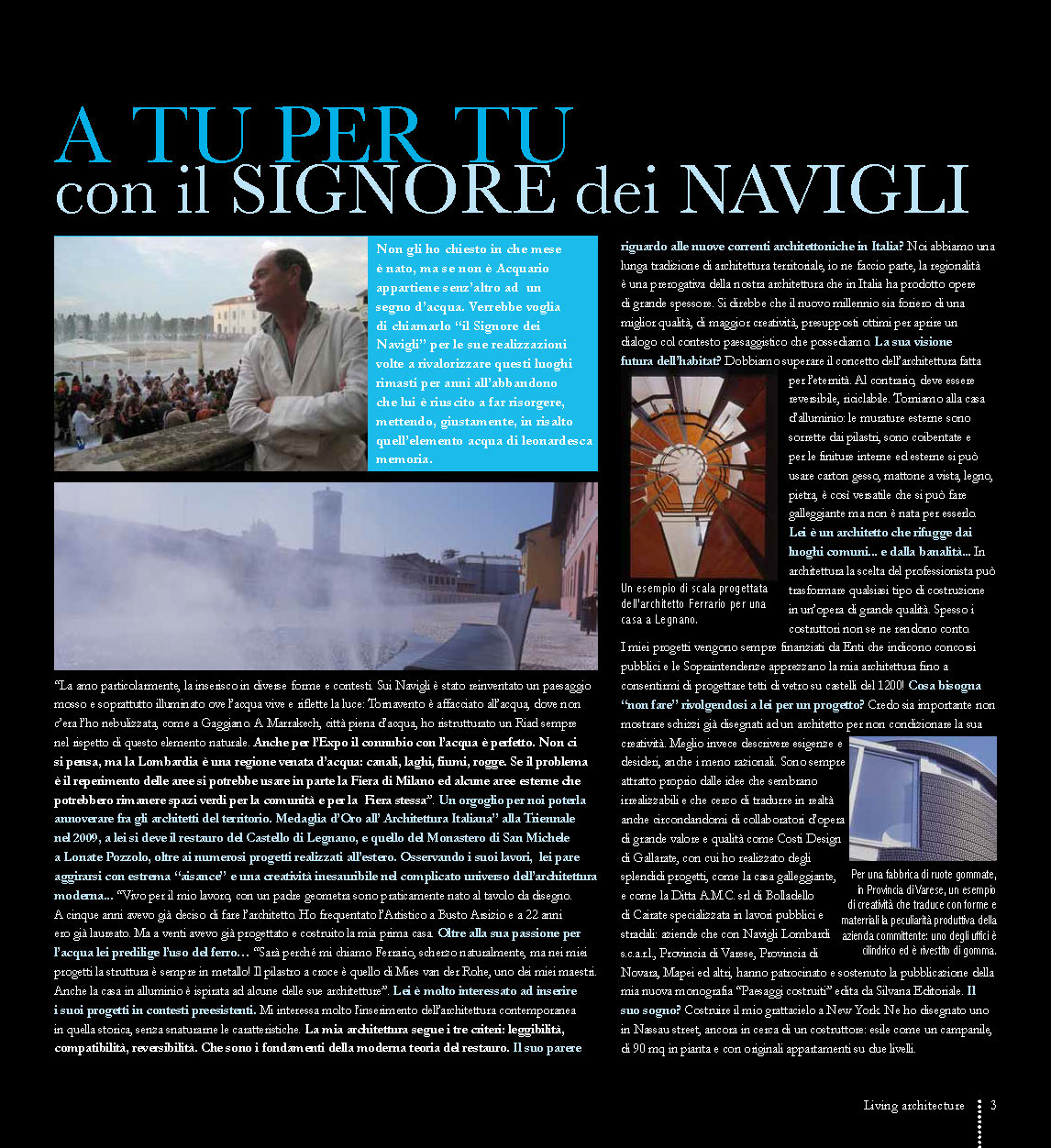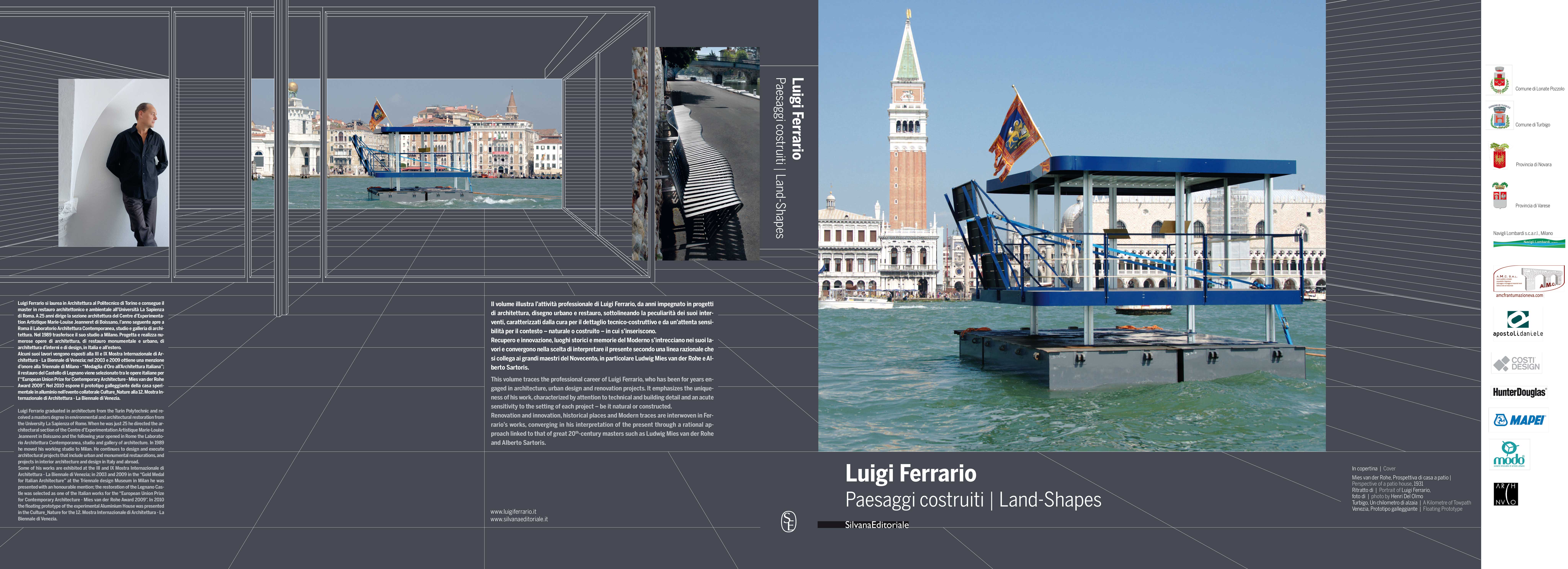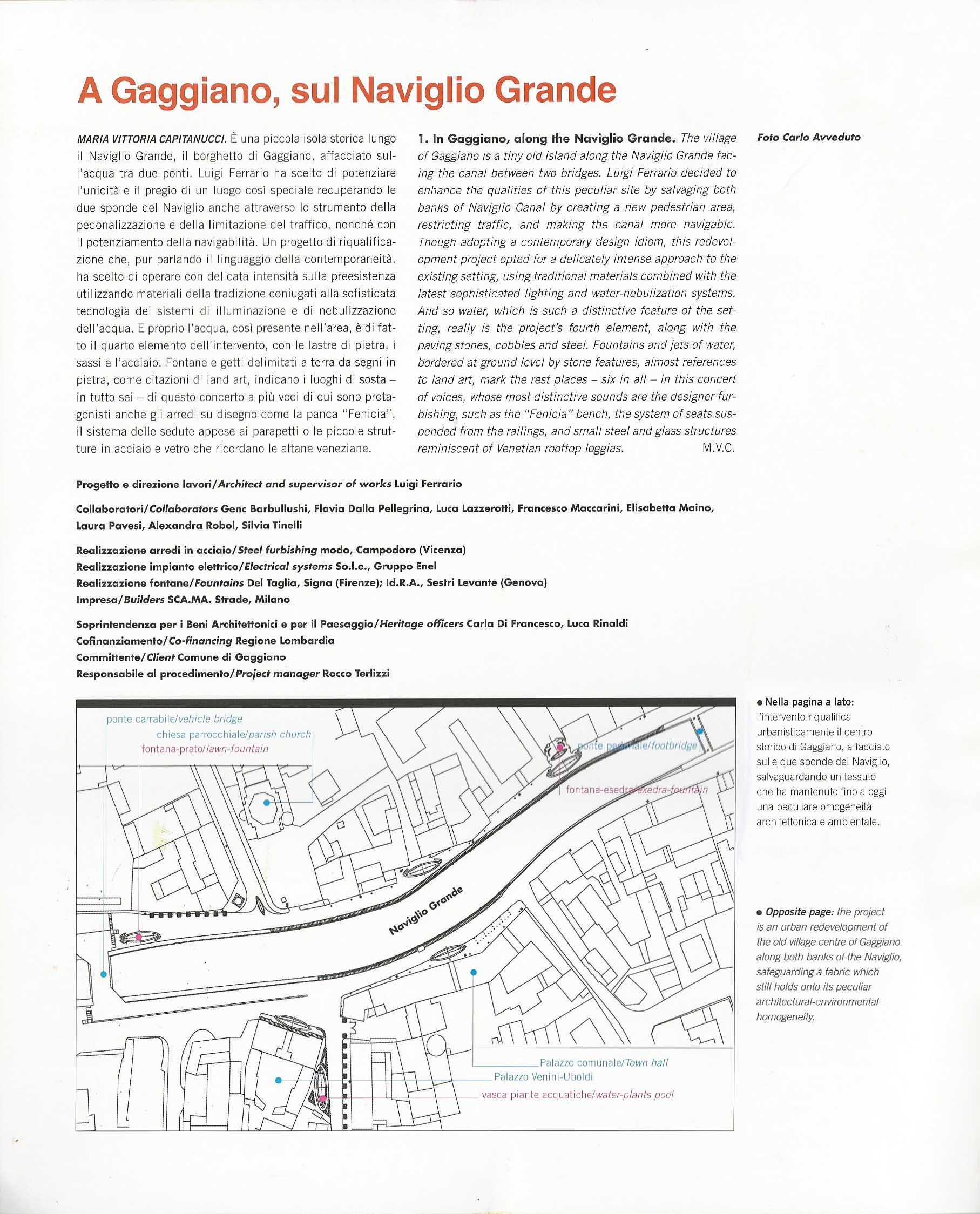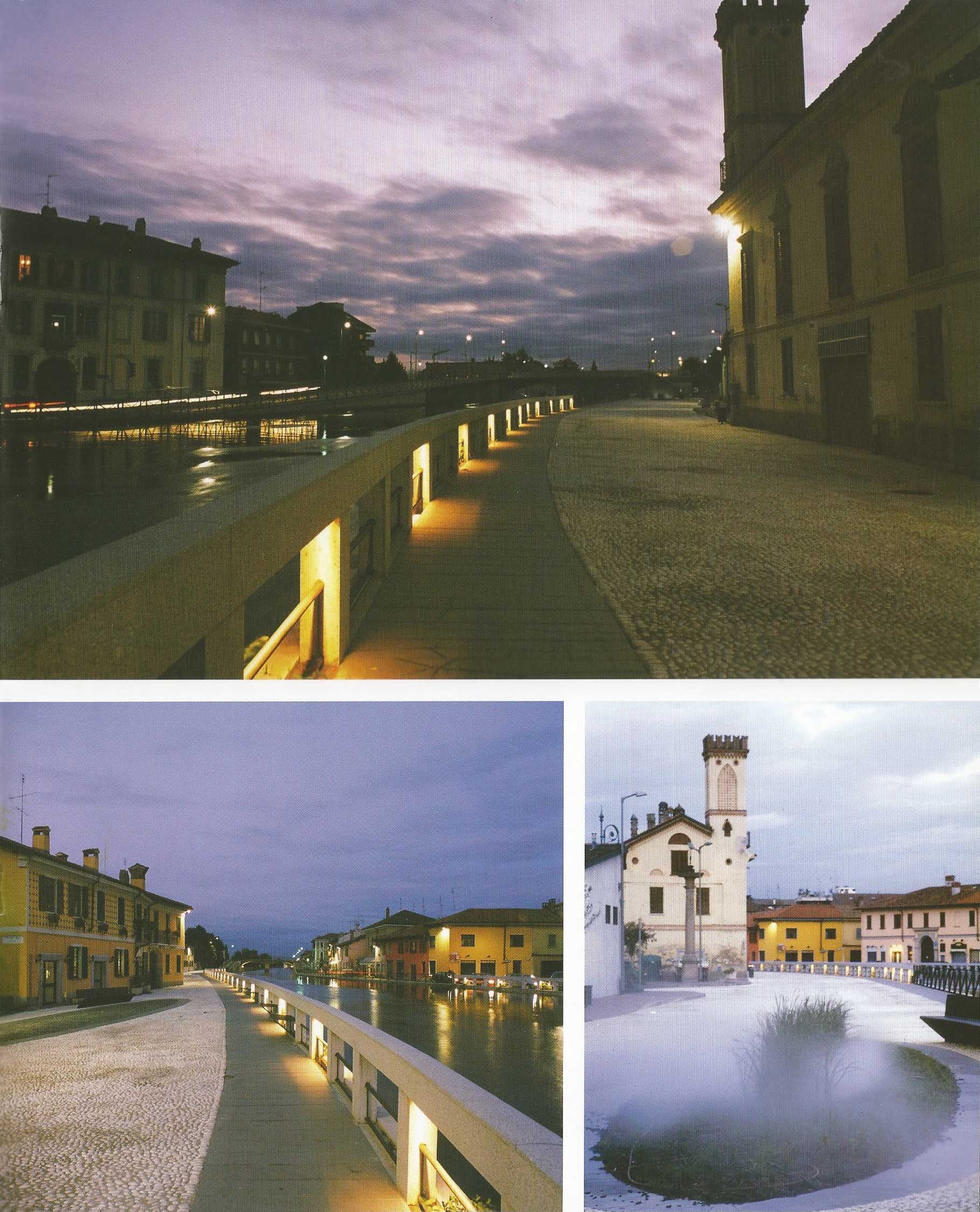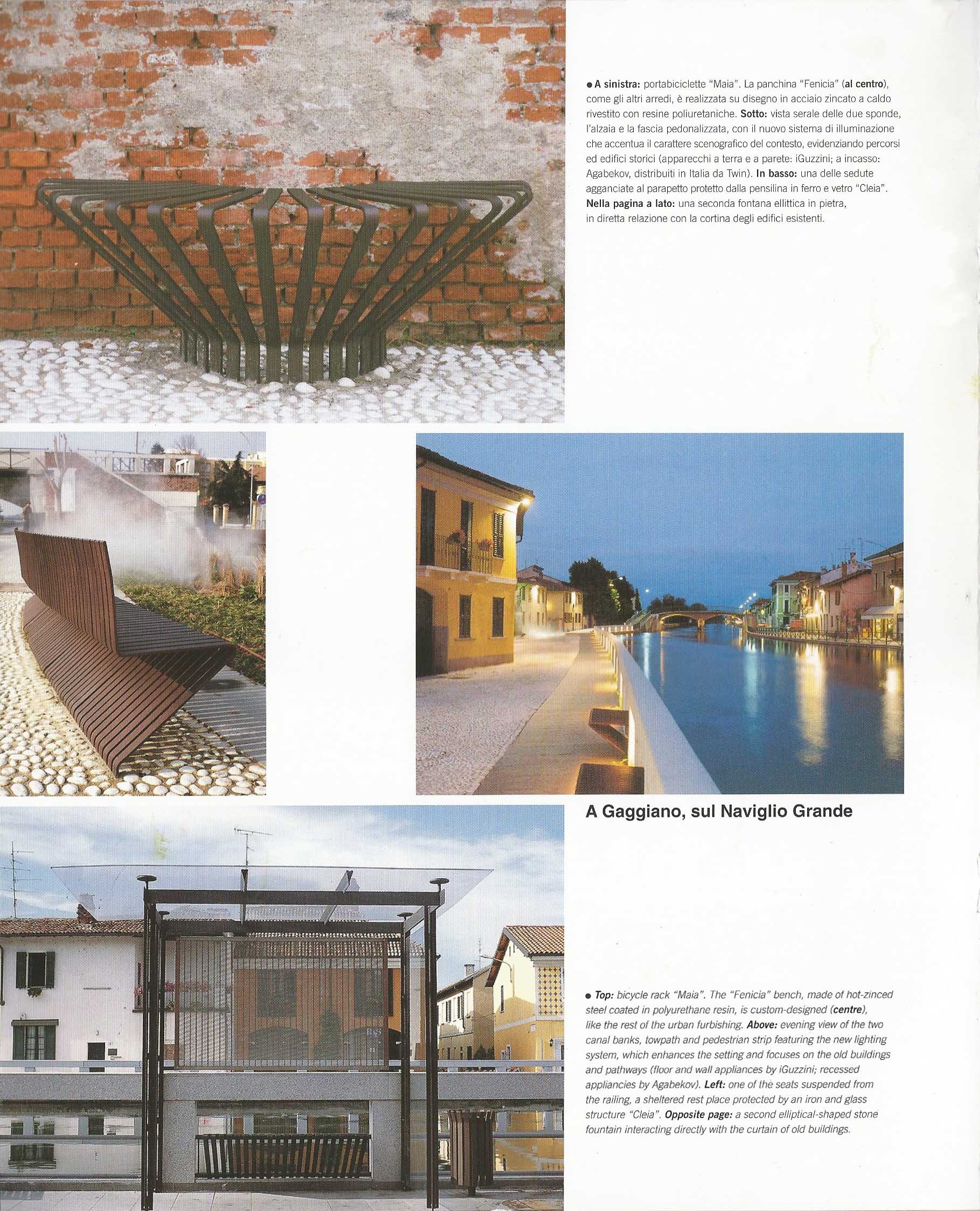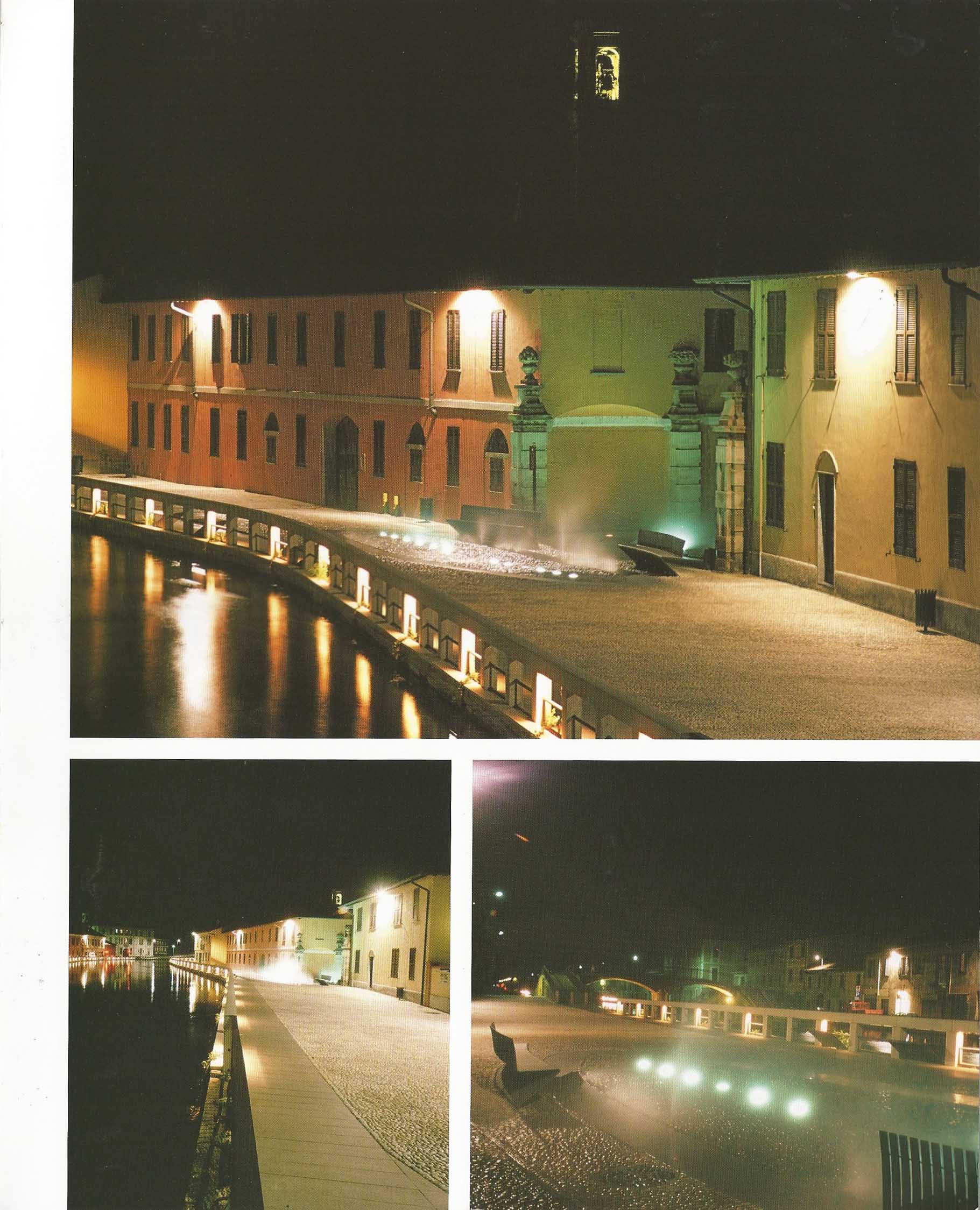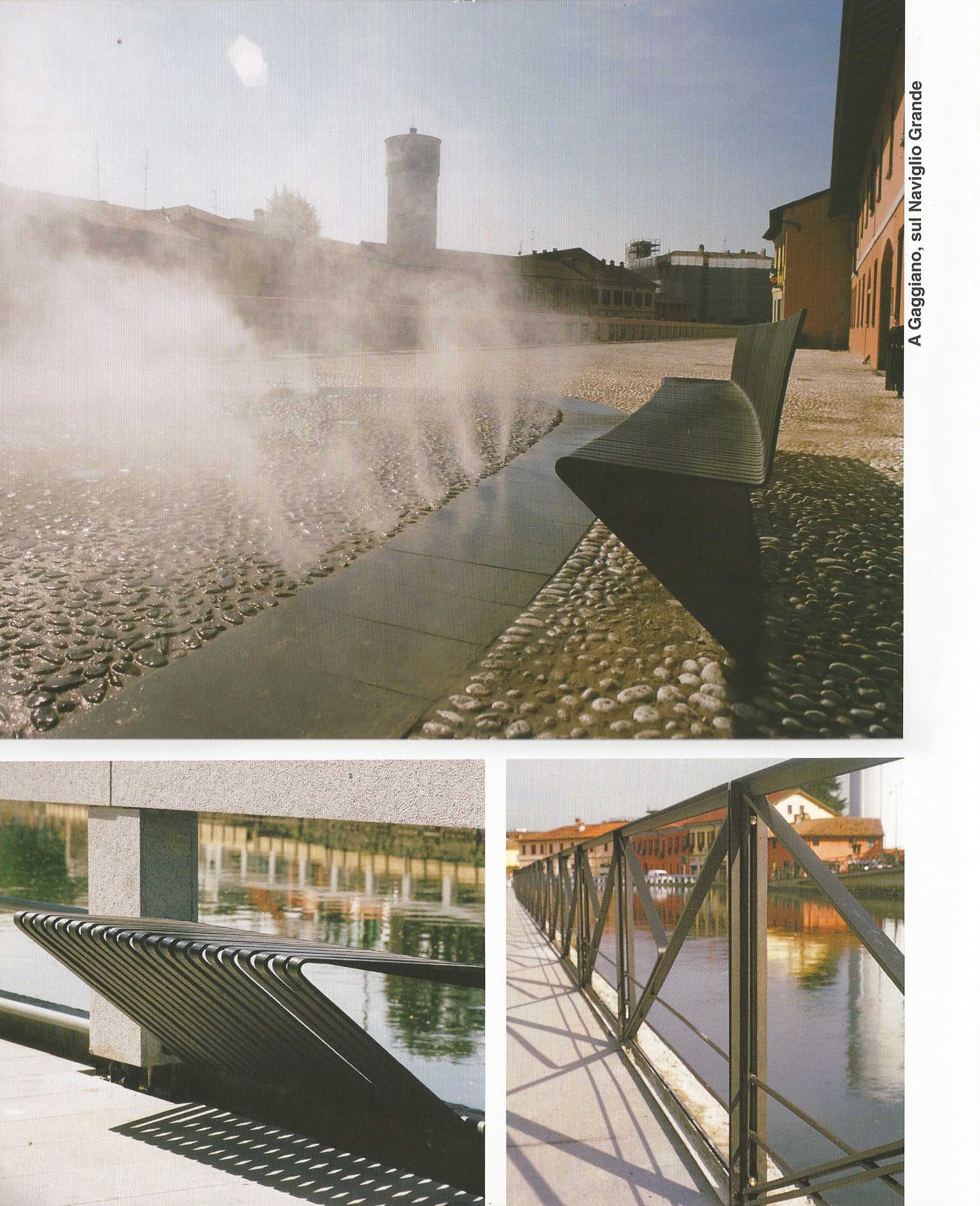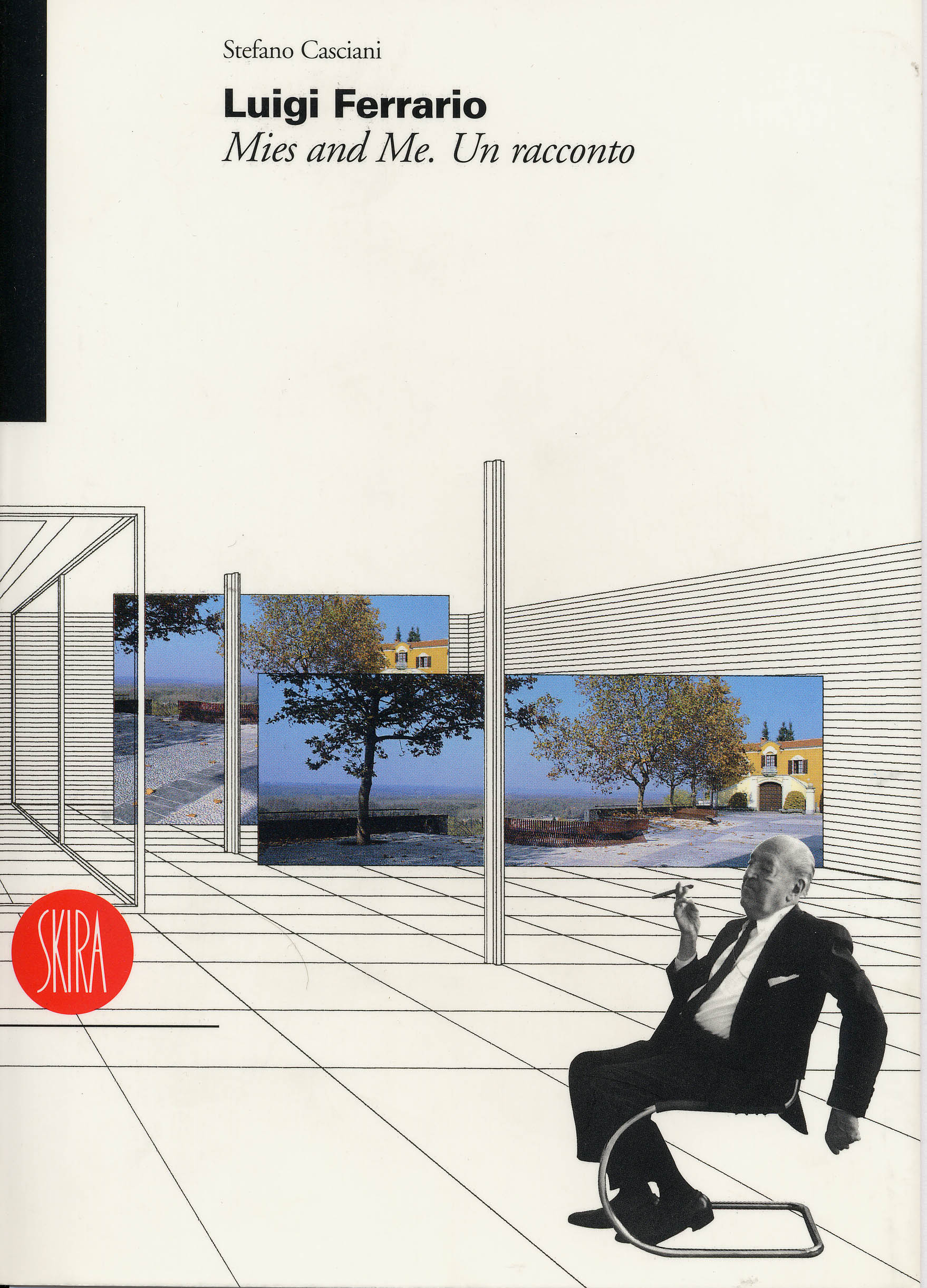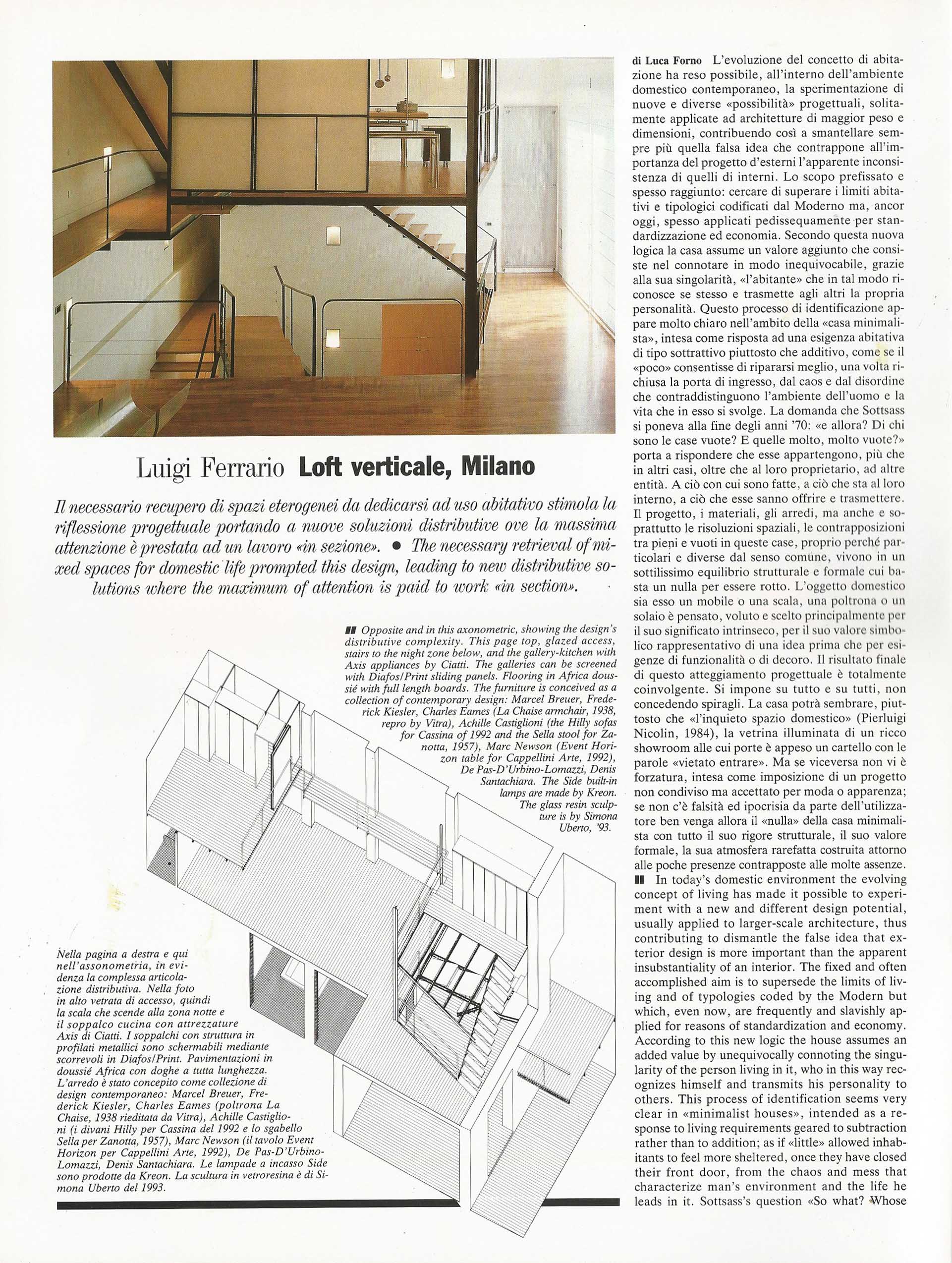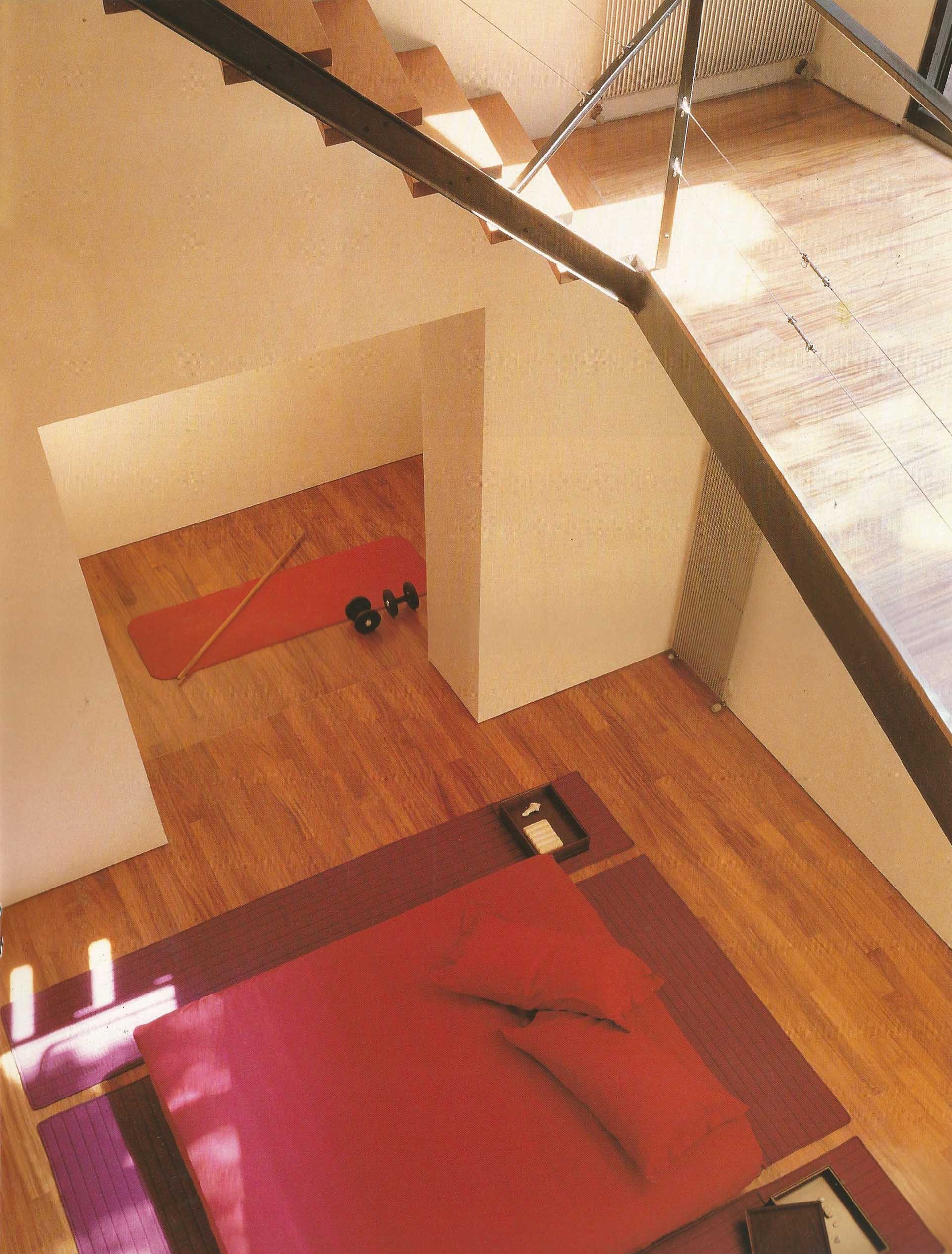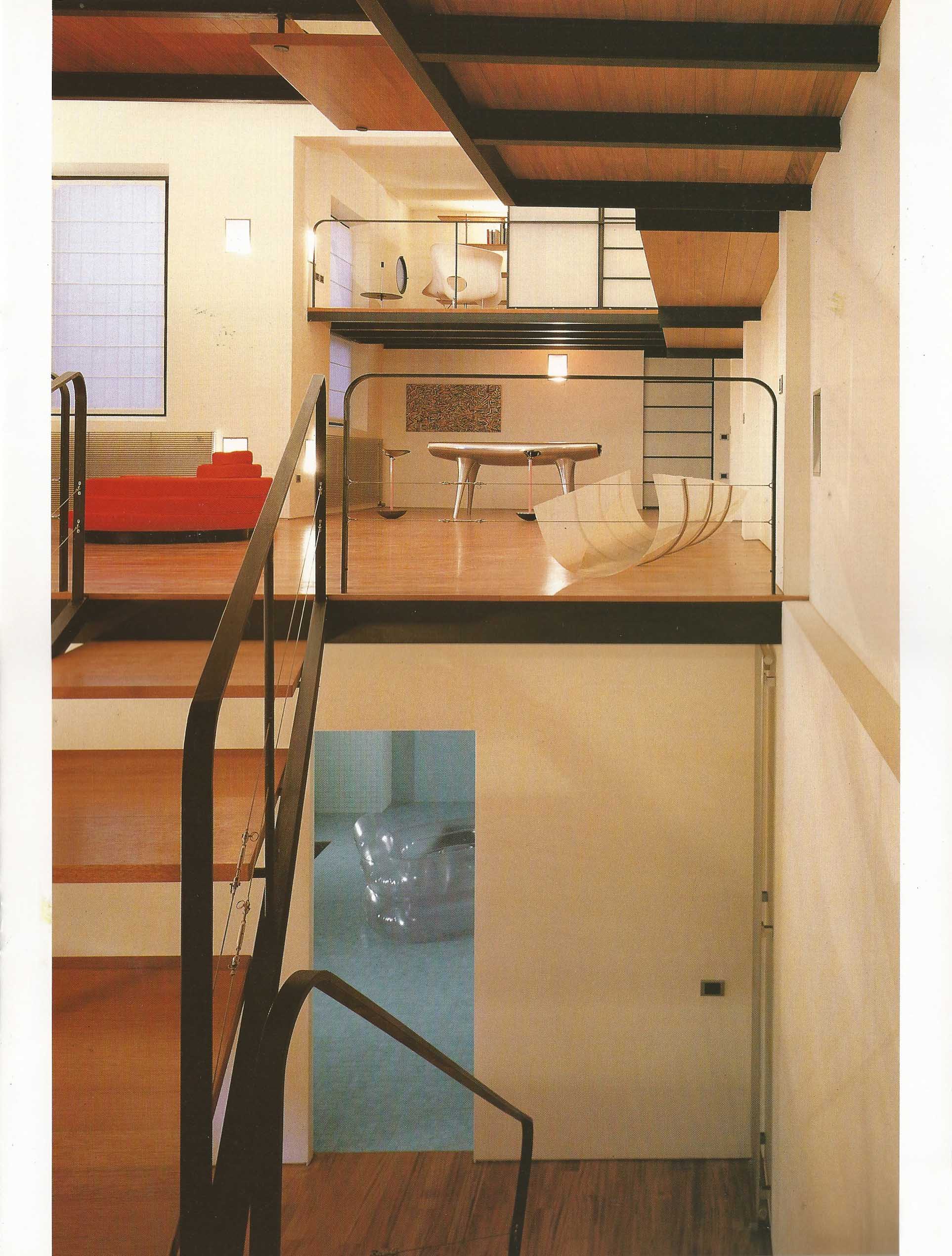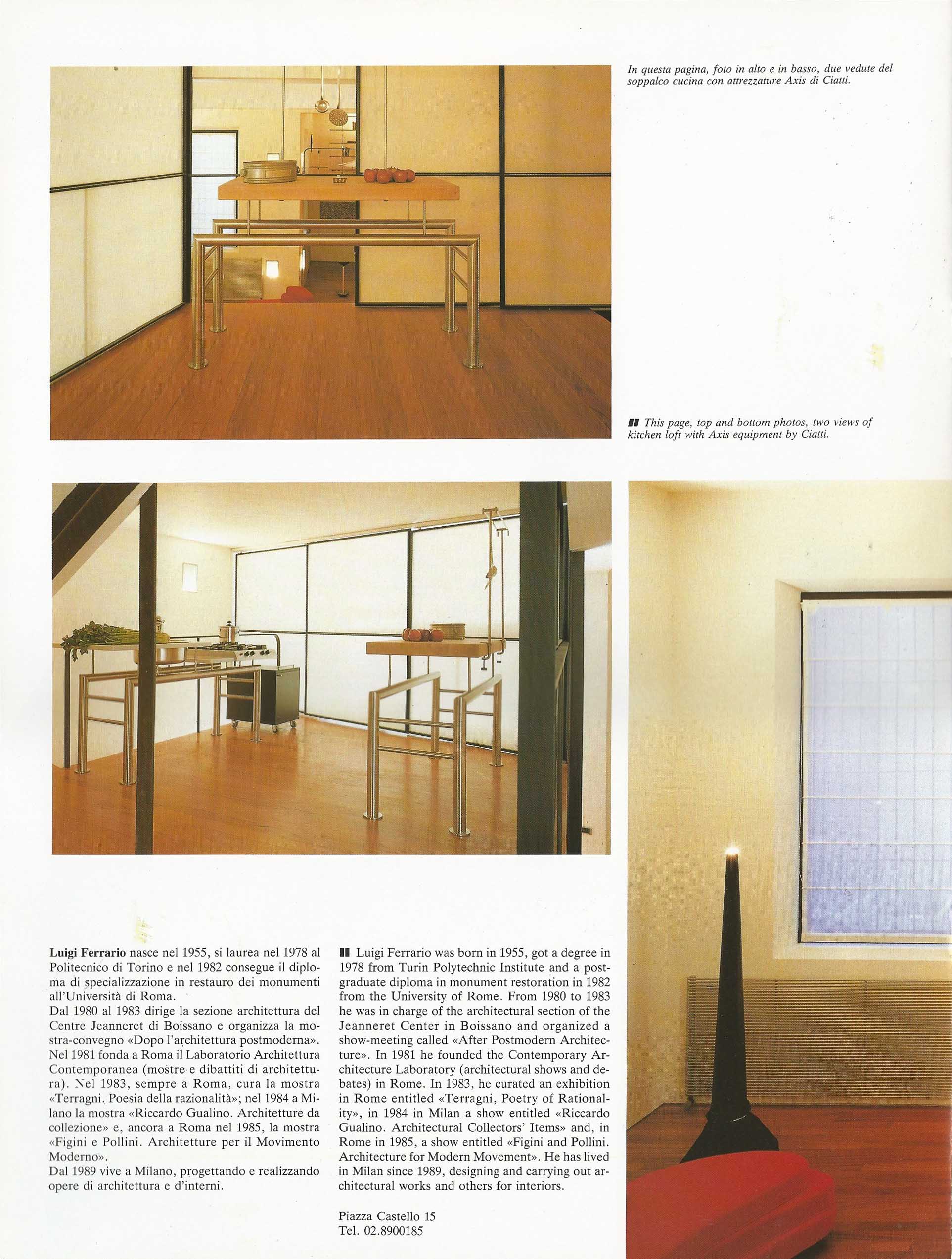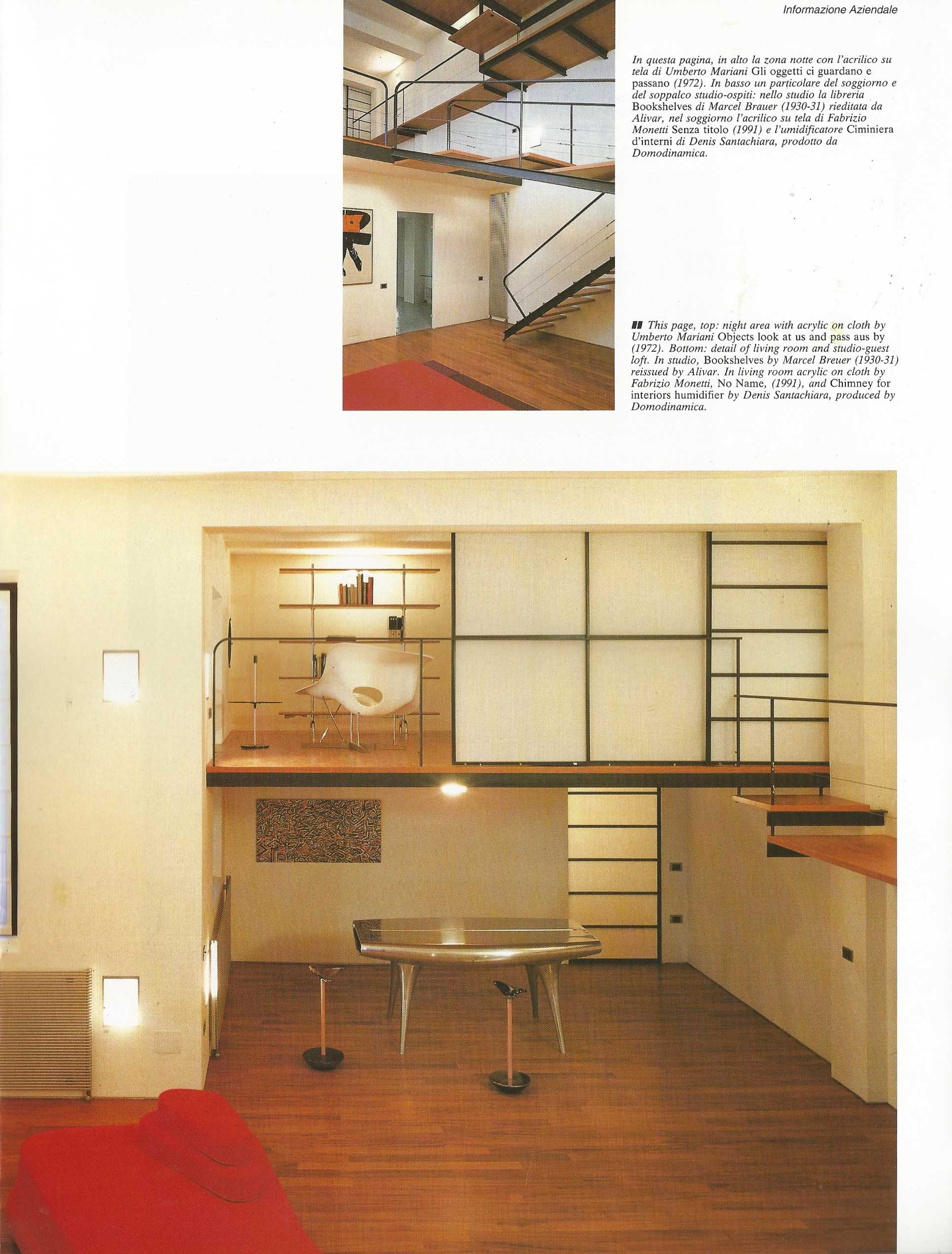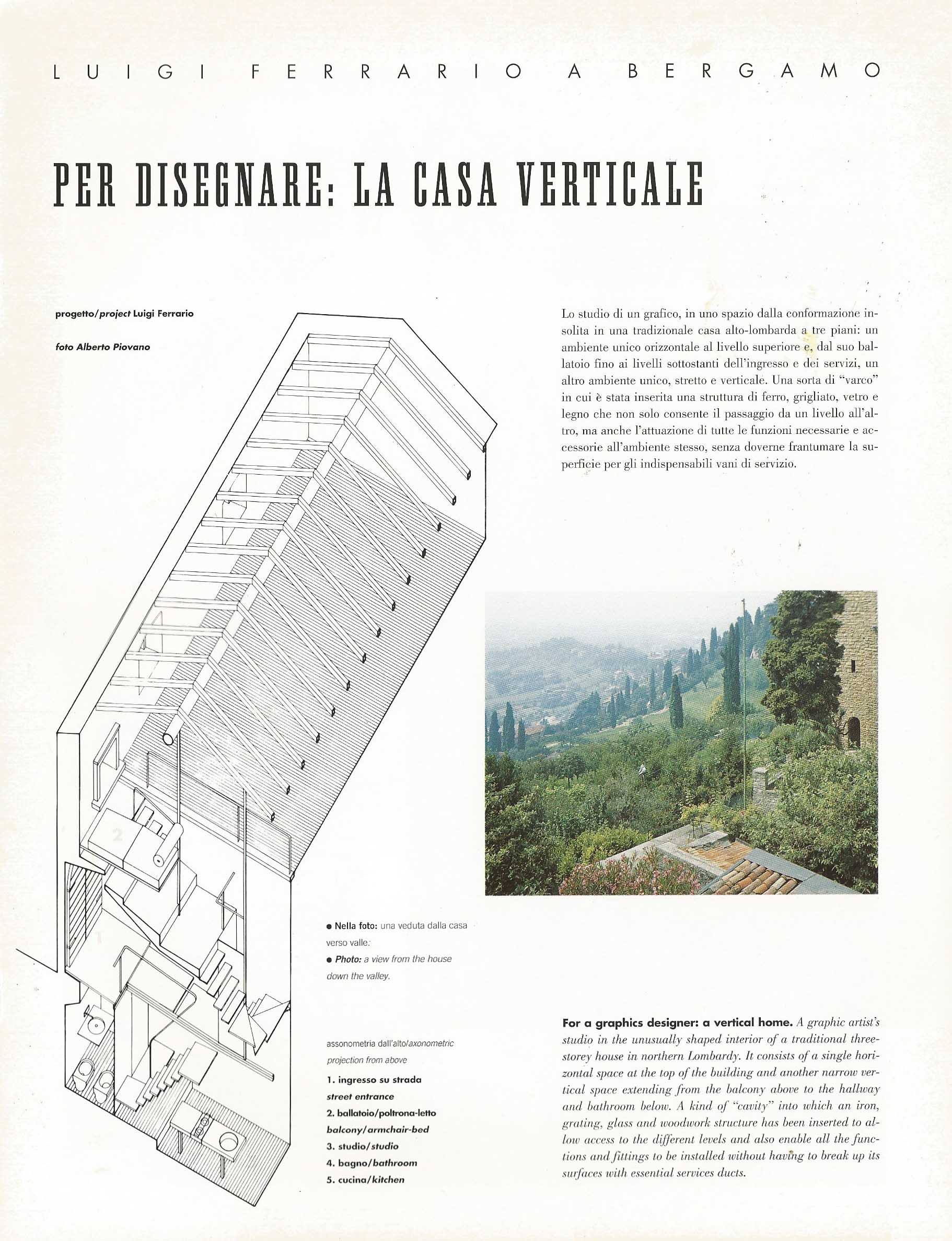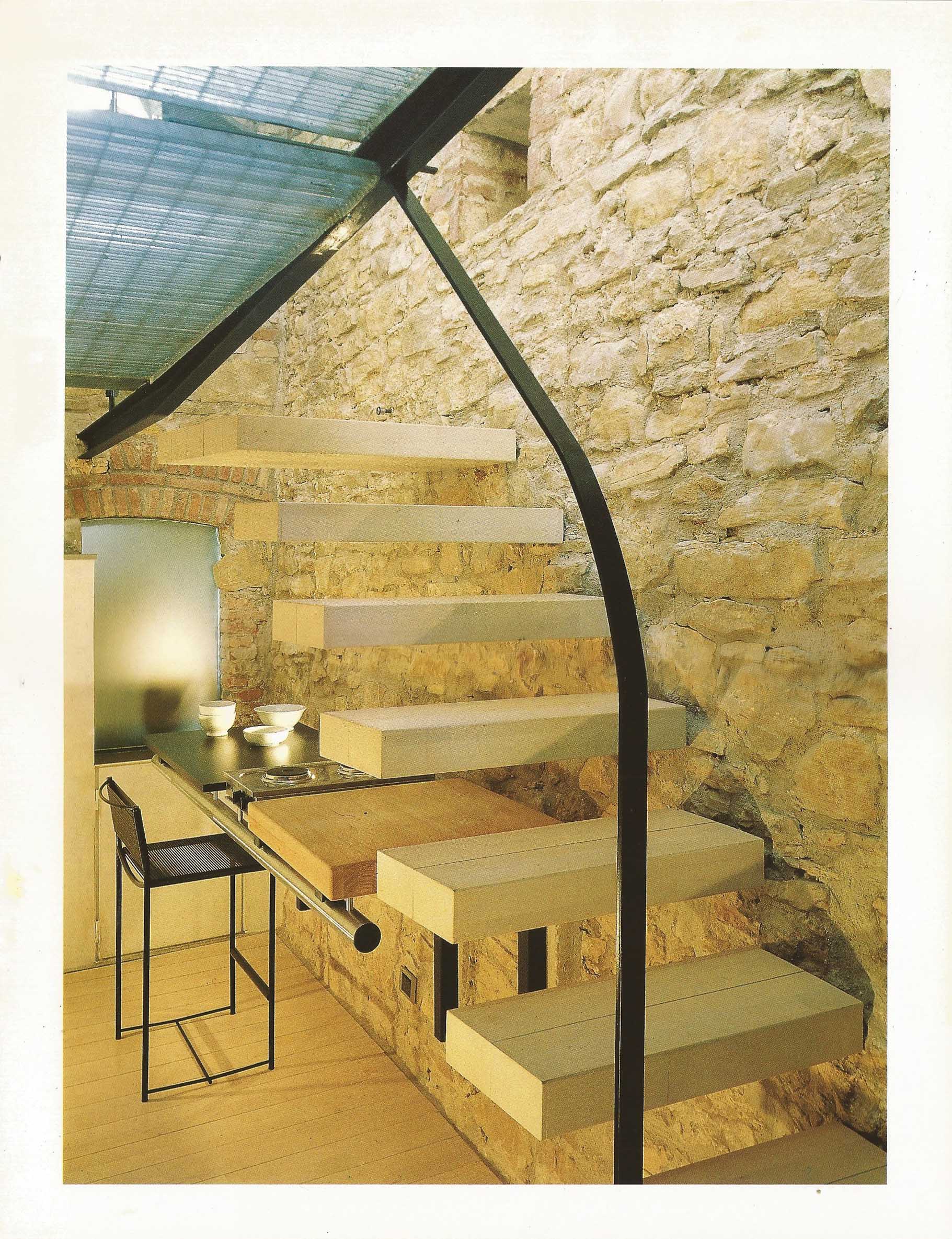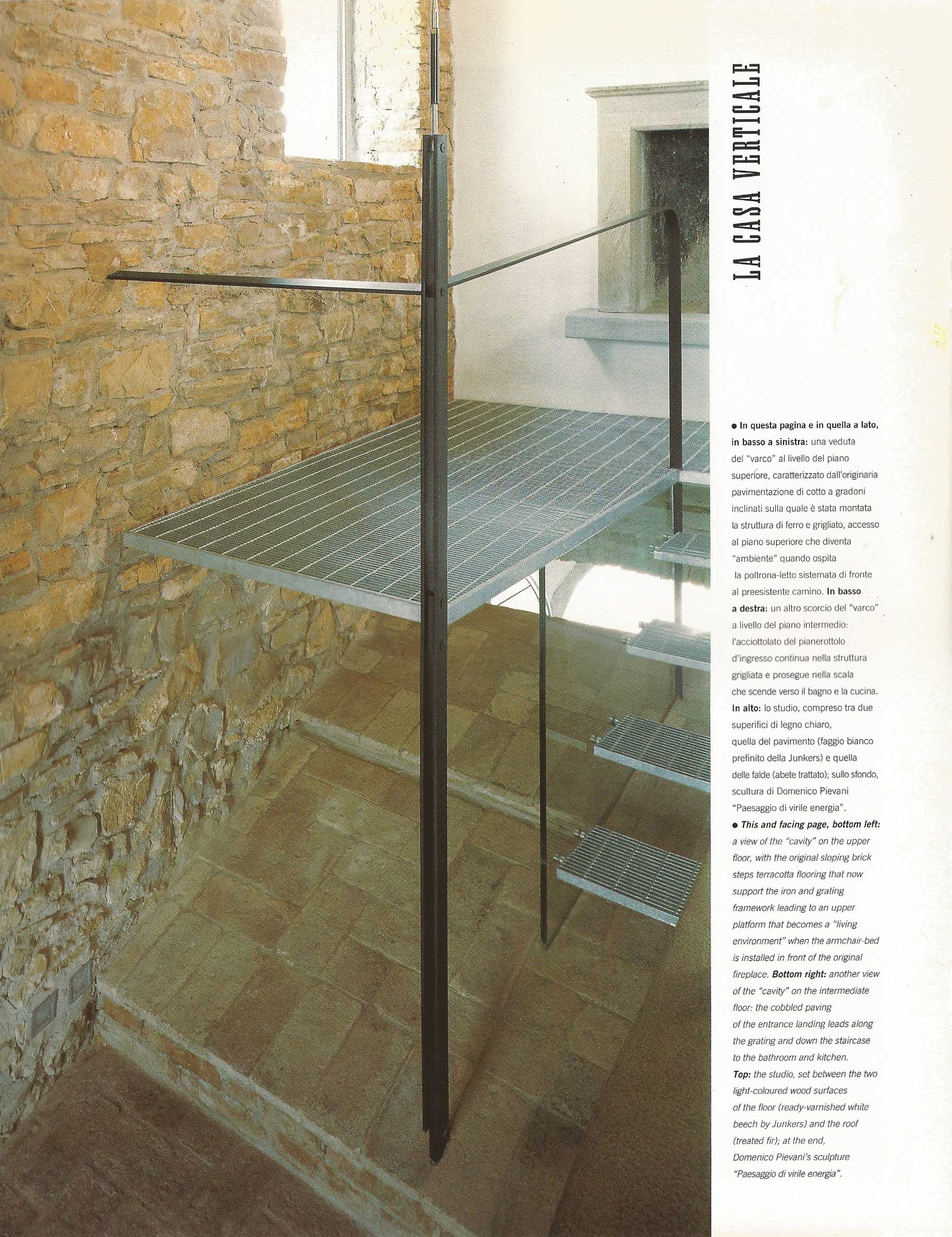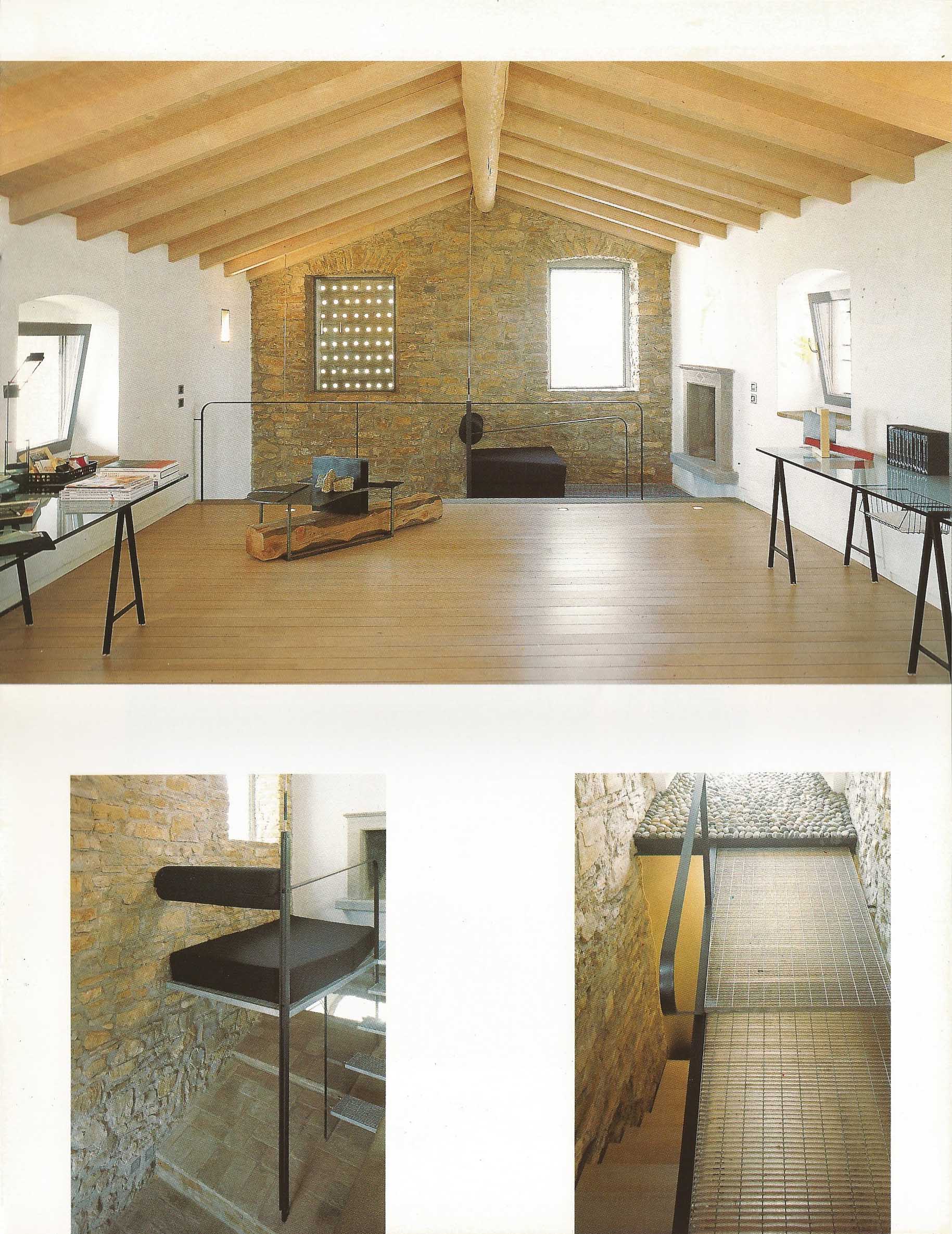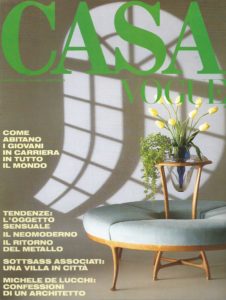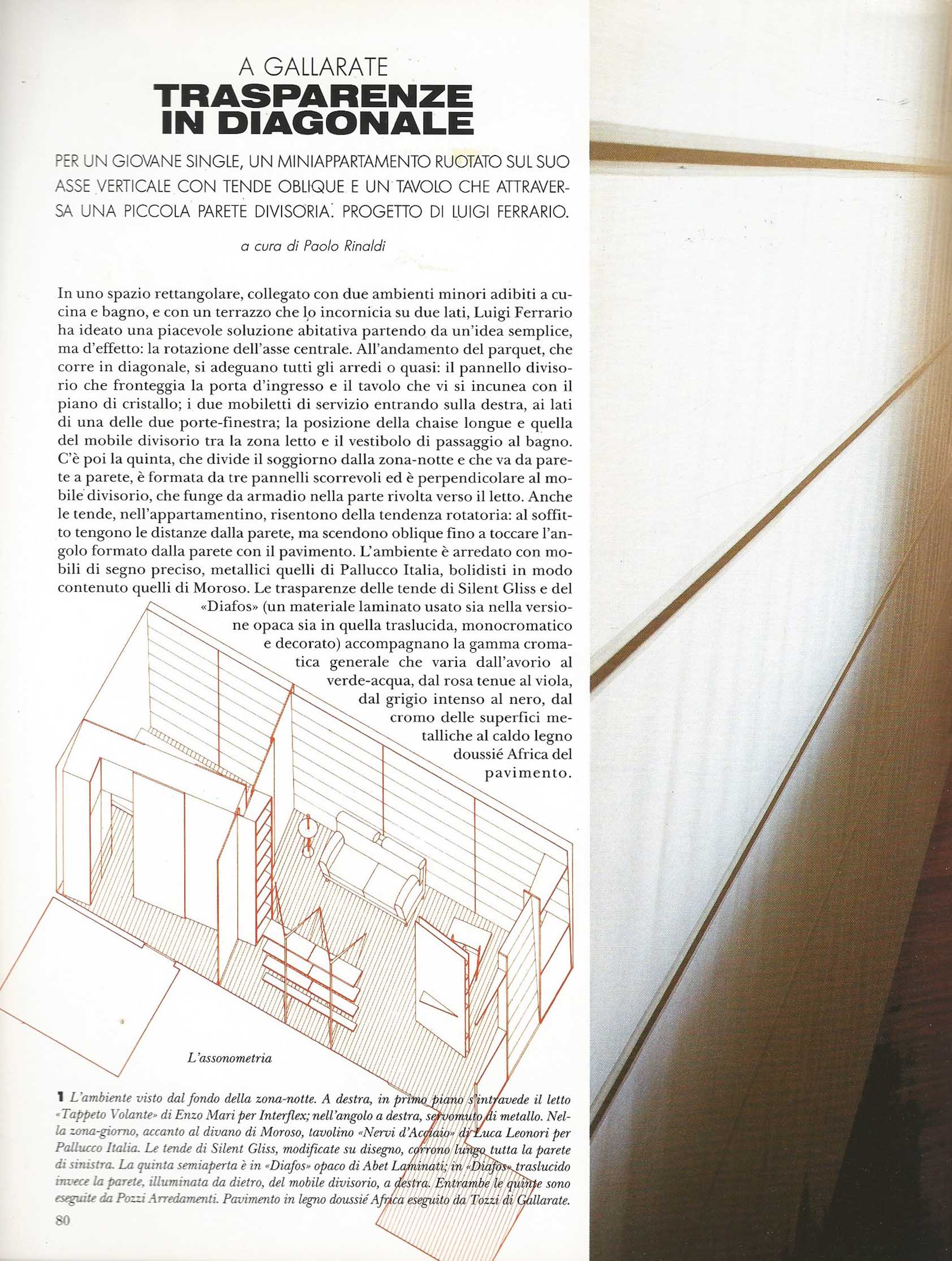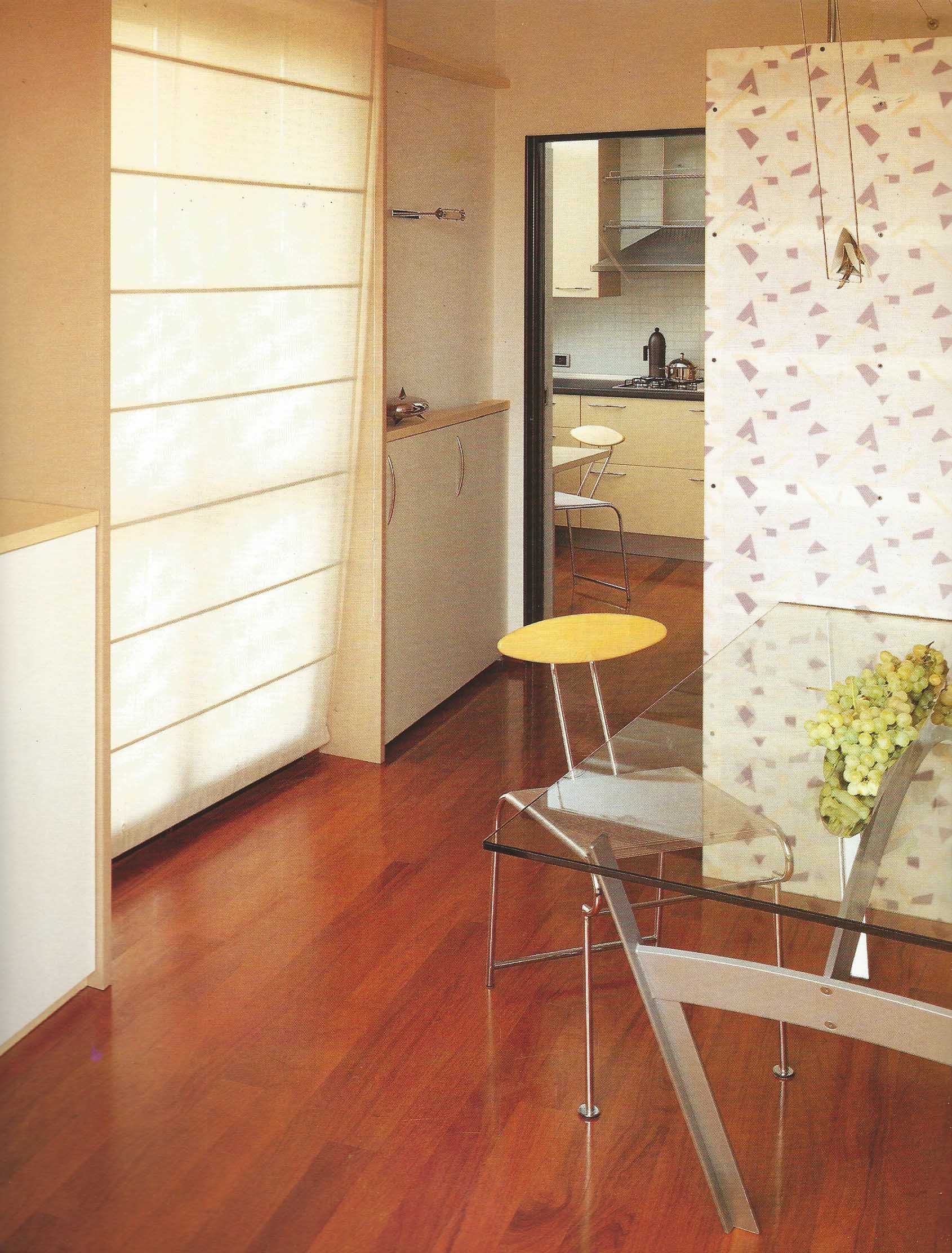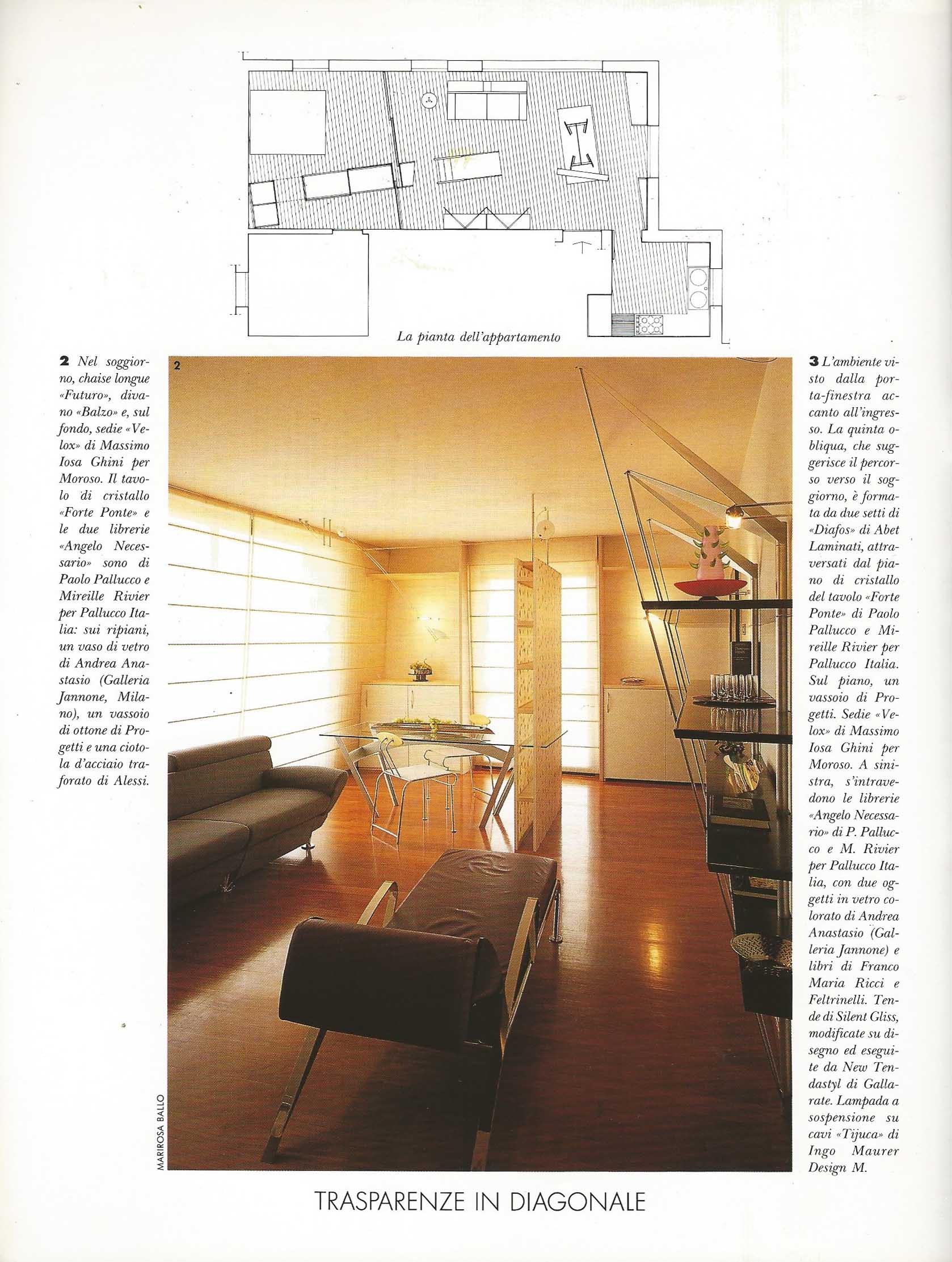2019
Interni #3/2019 //
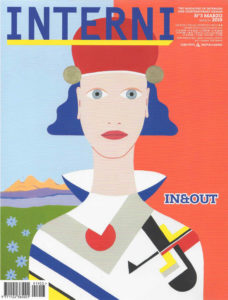
“LA CASA SUL TETTO (CHE SARÀ)”
A Milano, sui Bastioni di Porta Volta, la casa-studio di Luigi Ferrario, concepita come modello di una kit-house metropolitana del XXI secolo, si apre anche all’idea di un’architettura come canale informativo e pubblicitario.
In Milan, on the Bastioni di Porta Volta, Luigi Ferrario’s home-studio, conceived as a model of a metropolitan kit-house of the 21st century, also opens up to the idea of architecture as an information and advertising channel.
2017
2014
2014
2013
Living #85 //
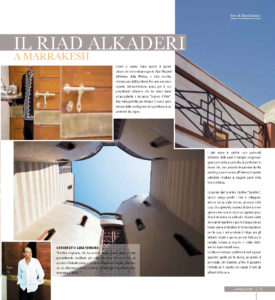
“L’ARCHITETTURA VARESINA VARCA LE FRONTIERE”
Colore e calore. Sono queste le parole chiave che determinano questo Riad Alkaderi all’interno della Medina, o città vecchia, ristrutturato dall’architetto Ferrario nel pieno rispetto dell’architettura araba per il suo proprietario milanese che ha voluto farne un’accogliente e lussuosa “maison d’hôte”. Una meta perfetta per iniziare il nuovo anno lontano dalle contingenze del quotidiano in un ambiente da sogno.
Color and warmth. These are the key words that refer to the renovation of Riad Alkaderi, inside the Medina, the old city. It is designed by the architect Ferrario in full respect of the Arab architecture for its Milanese owner who wanted to build a welcoming and luxurious “maison d’hôte”. A perfect destination to start the new year away from the daily contingencies in a dream environment.
2011
Interni #615 //
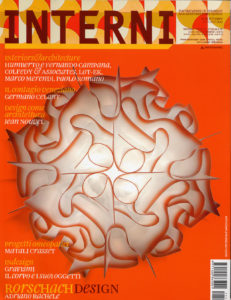
“IN LIBRERIA: LUIGI FERRARIO, PAESAGGI COSTRUITI/LAND-SHAPES”
Architetto fedele alla modernità, Luigi Ferrario raccoglie in questo volume circa trent’anni di attività progettuale che sotto il titolo di “Paesaggi costruiti” declina dall’intervento paesaggistico e urbano alla cura del dettaglio degli interni, una sorta di sensibilità e attenzione rispetto a ciò che ci circonda.
Luigi Ferrario is an architect faithful to modernity. This volume collects about thirty years of his work. The heading “Land-shapes” refers both to landscape and urban design and to the care of interior details. A sort of sensitivity and attention to what surrounds us.
2011
Casa Vogue #35 //

“NEL NOME DI MIES. UN’IDEA ORIGINALE DI PREFAB SOLIDO E DINAMICO TUTTO IN ALLUMINIO CHE LA LEGGE ITALIANA FA FATICA A CAPIRE”
È leggero, versatile, atossico. E, soprattutto, è resistente, durevole, riciclabile. Basterebbero queste qualità a fare dell’alluminio uno dei materiali jolly nell’edilizia contemporanea. Eppure, nonostante sia, dopo il ferro, l’elemento più diffuso in natura (si ricava dalla bauxite tramite un procedimento di purificazione e di elettrolisi), ben pochi progettisti prima di Luigi Ferrario, architetto specializzato in tecniche di recupero e innovazione costruttiva a basso impatto ambientale, avevano pensato di utilizzarlo per creare un’intera abitazione, sfruttandolo non solo per i rivestimenti o gli infissi, ma anche per la struttura.
Light, versatile and non-toxic. Above all, durable and recyclable. These qualities would be enough to make aluminum one of the jolly materials in contemporary buildings. Aluminum is the most widespread element in nature, after iron (it is derived from bauxite through a purification and electrolysis process). Despite this, very few designers thought to use it to create the structure of an entire house (and not just for the cladding or fixtures) before Luigi Ferrario, an architect specializing in renovation techniques and new low environmental impact.
2010
Living #55 //
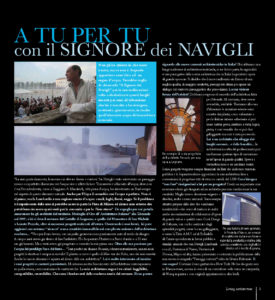
“L’ARCHITETTURA TERRITORIALE APPRODA IN BIENNALE”
Nel panorama dell’Expo 2015 le archistar sono straordinariamente, assolutamente alla moda. Ma a parte i soliti noti ne esistono altri degni di tale appellativo. A volte più archistar perché meno star ma indubbiamente più “archi”, come Luigi Ferrario, originario di Busto Arsizio. La sua casa galleggiante presentata alla 12° Mostra Internazionale di Architettura della Biennale di Venezia è stata fra i progetti più apprezzati e d’avanguardia nell’ambito dell’esposizione “Culture Nature”.
In the panorama of Expo 2015 the archistars are extraordinarily, absolutely fashionable. But apart from the usual known there are others worthy of that name. Sometimes more archistar because less star but undoubtedly more “archi”, like Luigi Ferrario, originally from Busto Arsizio. His houseboat presented at the 12th International Architecture Exhibition of the Venice Biennale was among the most appreciated and avant-garde projects in the “Culture Nature” exhibition.
2010
“Paesaggi Costruiti – Land Shapes” – Silvana Editoriale //

Il volume illustra l’attività professionale di Luigi Ferrario, da anni impegnato in progetti di architettura,disegno urbano e restauro, sottolineano la peculiarità dei suoi interventi, caratterizzati dalla cura per il dettaglio tecnico-costruttivo e da un’attenta sensibilità per il contesto – naturale o costruito – in cui s’ inserirscono.
Recupero e innovazione, luoghi storici e memorie del Moderno si intrecciano nei suoi lavori e convergono nella scelta di interpretare il presente secondo una linea razionale che si collega ai grandi maestri del Novecento, in particolare di Ludwig Mies van der Rohe e Alberto Sartoris.
This volume traces the professional career of Luigi Ferrario, who has been for years engaged in architecture, urban design and renovation projects. It emphasizes the uniqueness of his work, characterized by attention to technical and building detail and an acute sensitivity to the setting of each project – be it natural or constructed.
Renovation and innovation, historical places and Modern traces are interwoven in Ferrario’s works, converging in his interpretation of the present through a rational approach linked to that of great 20th-century masters such ad Ludwig Mies van der Rohe and Alberto Sartoris.![]()
2006
Abitare #457 //
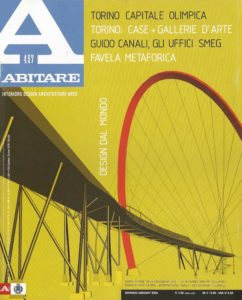
“IN GAGGIANO, ALONG THE NAVIGLIO GRANDE”
È una piccola isola storica lungo il Naviglio Grande, il borghetto di Gaggiano, affacciato sull’acqua tra due ponti. Luigi Ferrario ha scelto di potenziare l’unicità e il pregio di un luogo così speciale recuperando le due sponde del Naviglio anche attraverso lo strumento della pedonalizzazione e della limitazione del traffico, nonché con il potenziamento della navigabilità.
The village of Gaggiano is a tiny old island along the Naviglio Grande facing the canal between two bridges. Luigi Ferrario decided to enhance the qualities of this peculiar site by salvaging both banks of Naviglio Canal by creating a new pedestrian area, restricting traffic, and making the canal more navigable.
1999
“Mies and Me” – Skira Editore //

Luigi, giovane architetto, si rivolge al giornalista Stefano per scrivere i testi di un libro sulla sua attività che Skira sta pubblicando: Discutendo il progetto, in base ad alcune “citazioni” di Mies van der Rohe presenti nelle architetture di Luigi, nasce l’idea di dare al libro il titolo ironico Mies and Me. Inizalmente restio, via via sempre più appassionato, Stefano fa uno strano incontro: gli appare Mies va der Rohe stesso, con cui discute di Frank Lloyd Wrigt e di architetti contemporanei.
Un libro serio e ironico, un racconto per voci e immagini sull’ultima stagione dell’architettura di questo secolo, attraverso le opere e i progetti di un giovane sperimentatore di tecniche e linguaggi.
Luigi, a young architect, appeals to Stefano, the journalist, to write the essay for a book on his work that Skira is publishing. While discussing the project, because of some ‘quotations’ of Mies van der Rohe to be found in Luigi’s architectures, they hit on the idea of giving the book the ironic title “Mies and Me”. At first Stefano is reluctant, but after a while he becomes more and more fascinated, and starts having singular encounters: Mies van der Rohe appears to him in person, they discuss about Frank Lloyd Wright and about contemporary architects as well.
A book both serious and ironic, a story in words and images about the last period of the architecture of our century, told through the works and designs of a young experimenter in technologies and languages.
1993
Domus #755 //
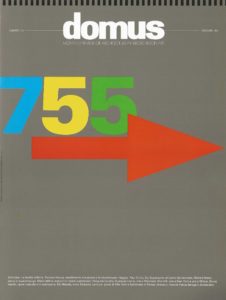
“LUIGI FERRARIO, LOFT VERTICALE A MILANO”
Il necessario recupero di spazi eterogenei da dedicarsi ad uso abitativo stimola la riflessione progettuale portando a nuove soluzioni distributive ove la massima attenzione è prestata ad un lavoro “in sezione”.
The necessary retrieval of mixed spaces for domestic life prompted this design, leading to new distributive solutions where maximum of attention is paid to work «in section».
1993
Abitare #321 //

“FOR A GRAPHICS DESIGNER: A VERTICAL HOME”
Lo studio di un grafico, in uno spazio dalla conformazione insolita in una tradizionale casa alto-lombarda a tre piani: un ambiente unico orizzontale al livello superiore e, dal suo ballatoio fino ai livelli sottostanti dell’ingresso e dei servizi, un altro ambiente unico, stretto e verticale.
Una sorta di “varco” in cui è stata inserita una struttura di ferro, grigliato, vetro e legno che non solo consente il passaggio da un livello all’altro, ma anche l’attuazione di tutte le funzioni necessarie e accessorie all’ambiente stesso, senza doverne frantumare la superficie per gli indispensabili vani di servizio.
A graphic artist’s studio in the unusually shaped interior of a traditional three-storey house in northern Lombardy. It consists of a single horizontal space at the top of the building and another narrow vertical space extending from the balcony above to the hallway and bathroom below.
A kind of “cavity” into which an iron, grating, glass and woodwork structure has been inserted to allow access to the different levels and also enable all the functions and fittings to be installed without having to break up its surfaces with essential services ducts.
